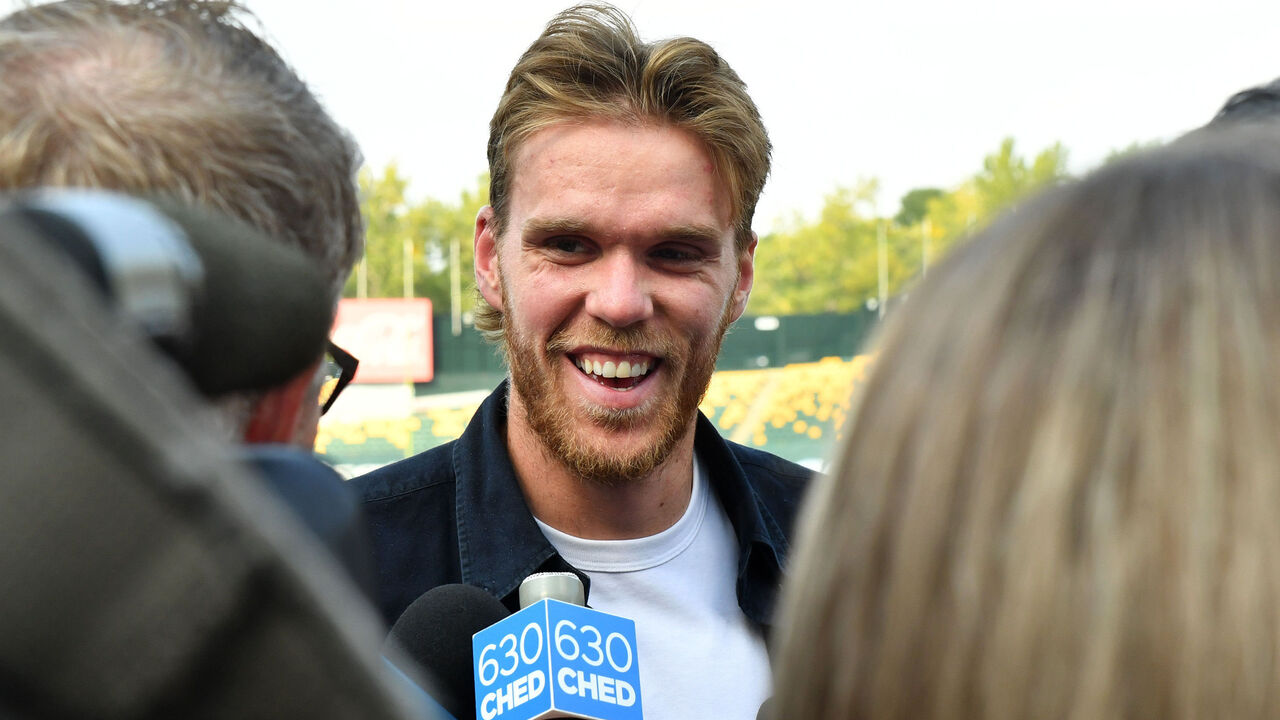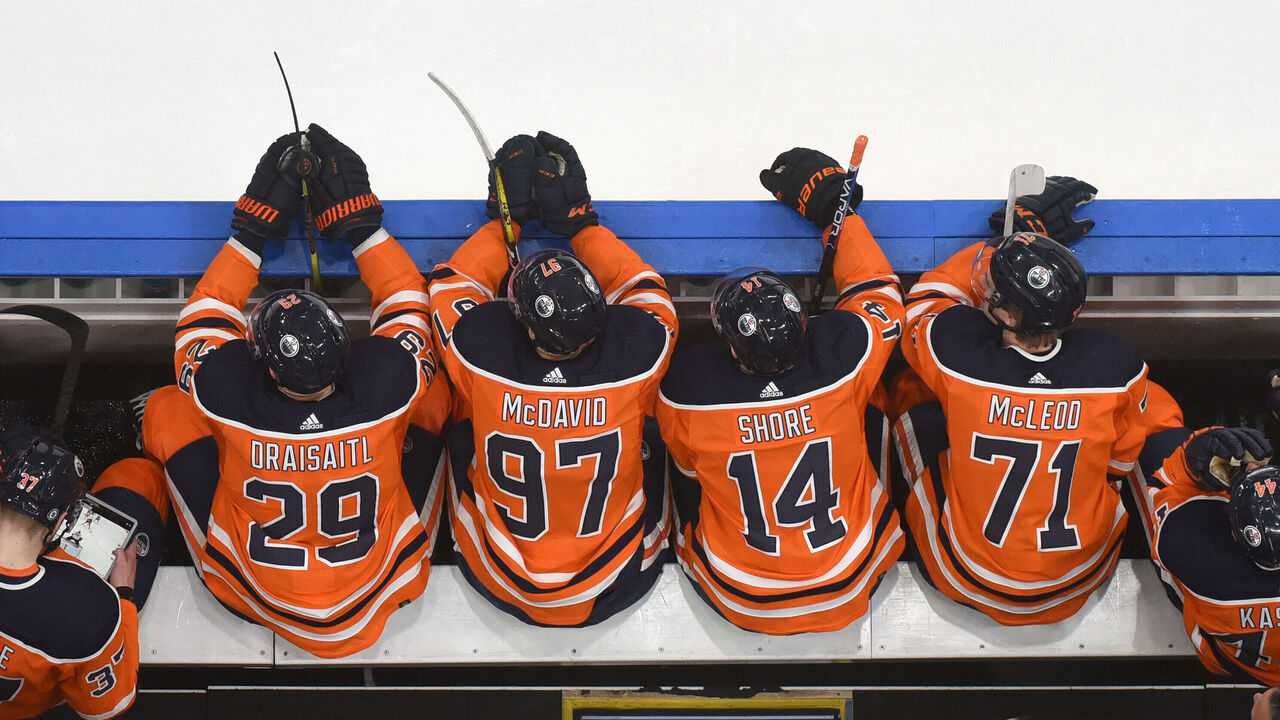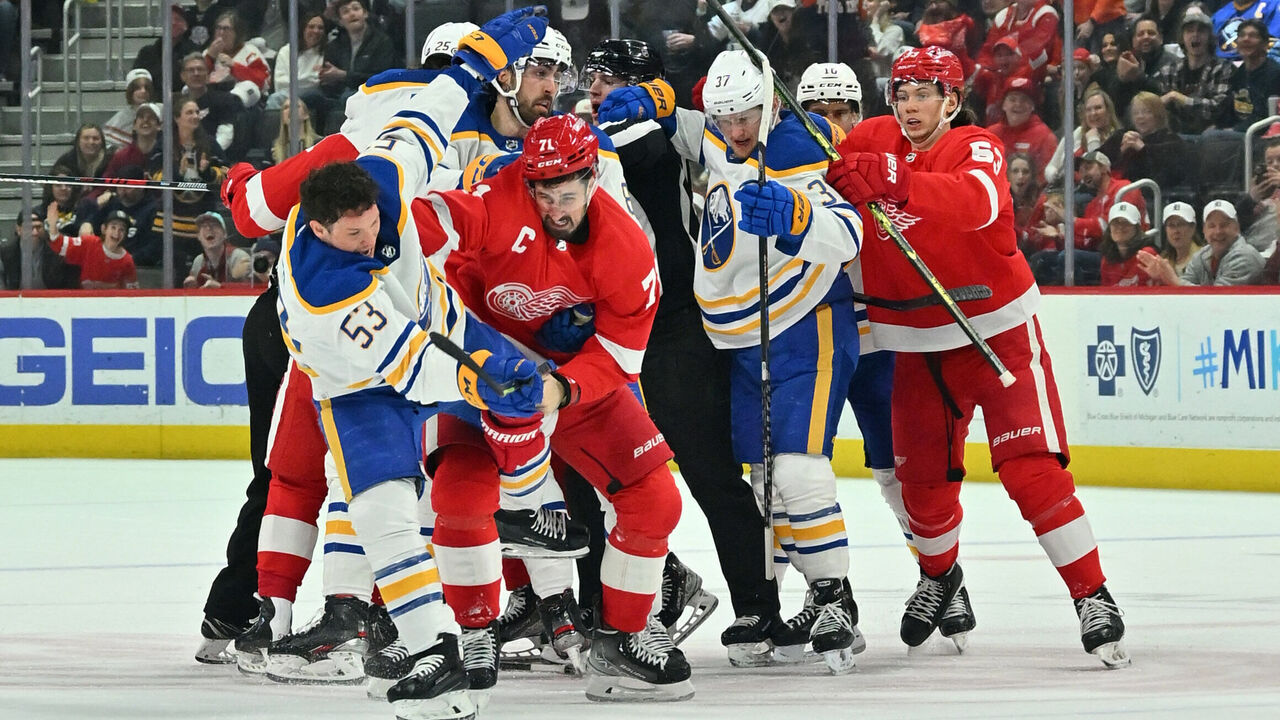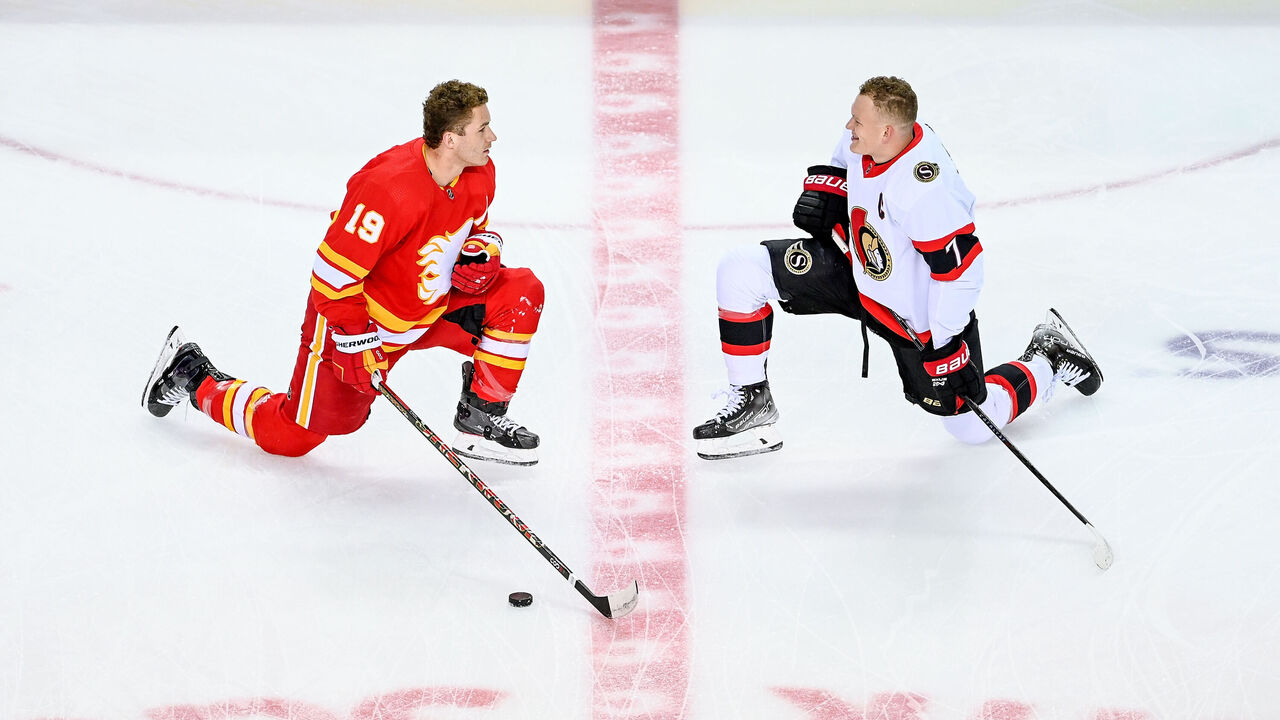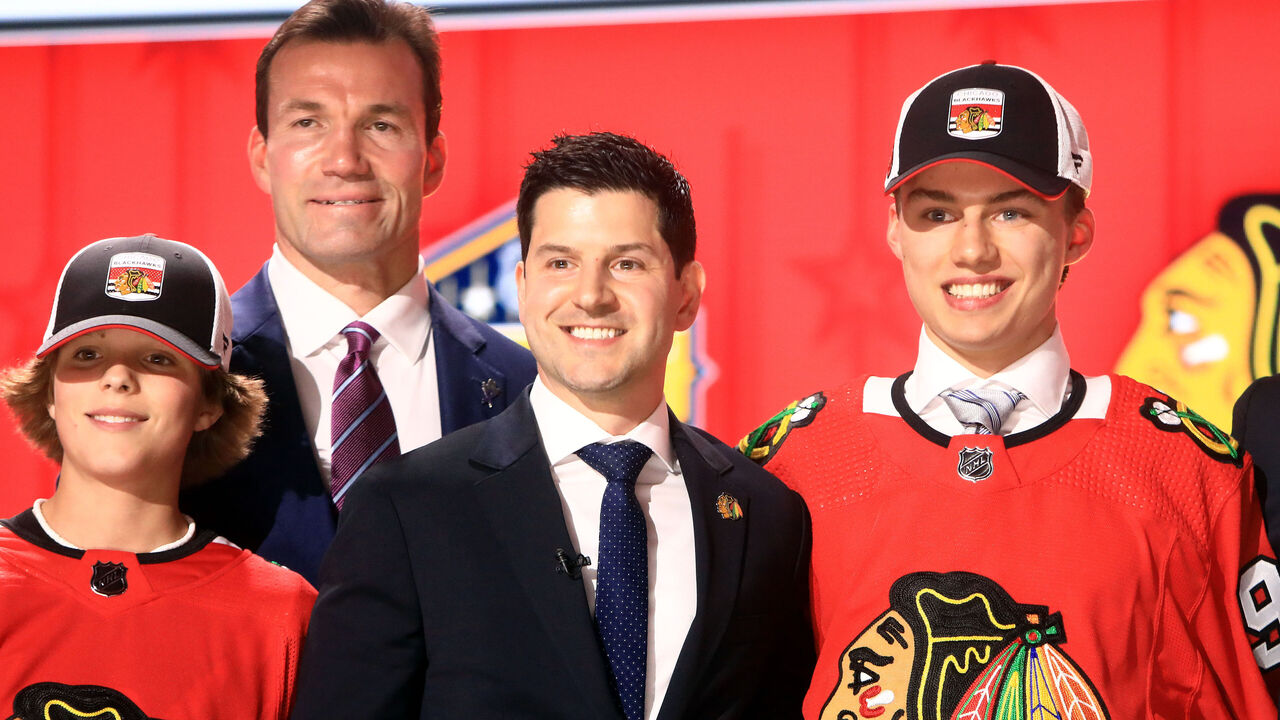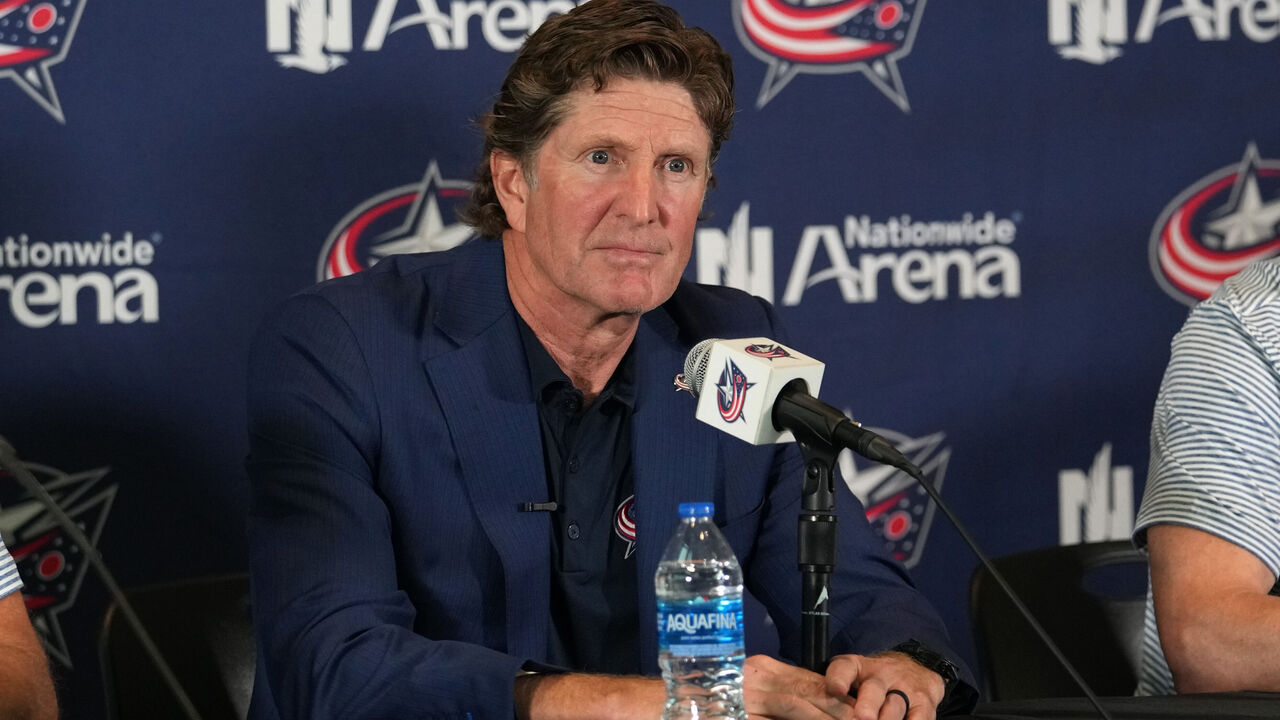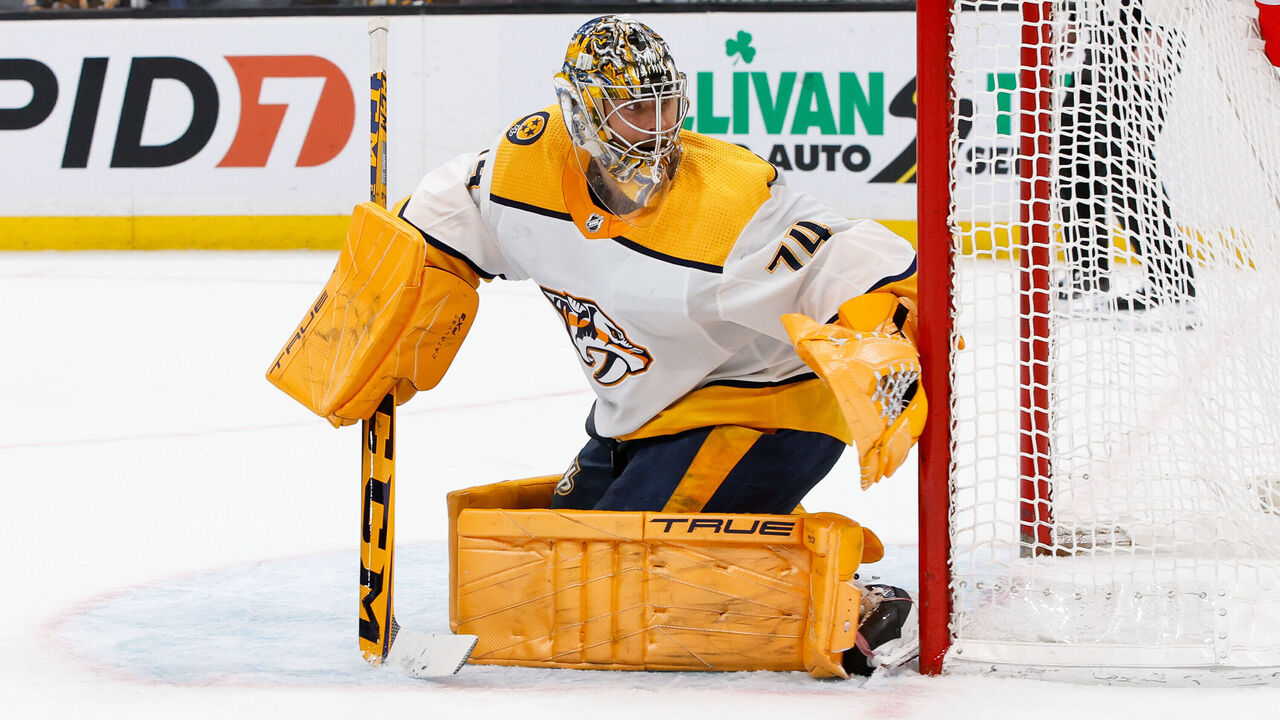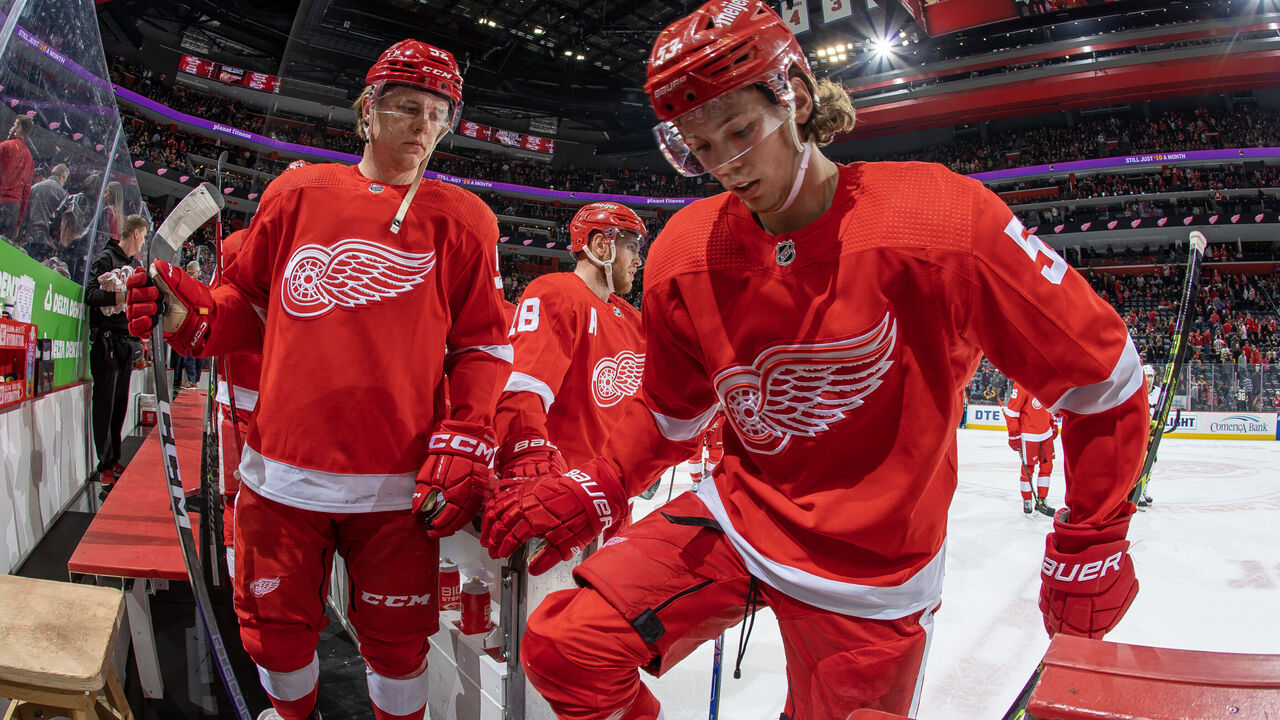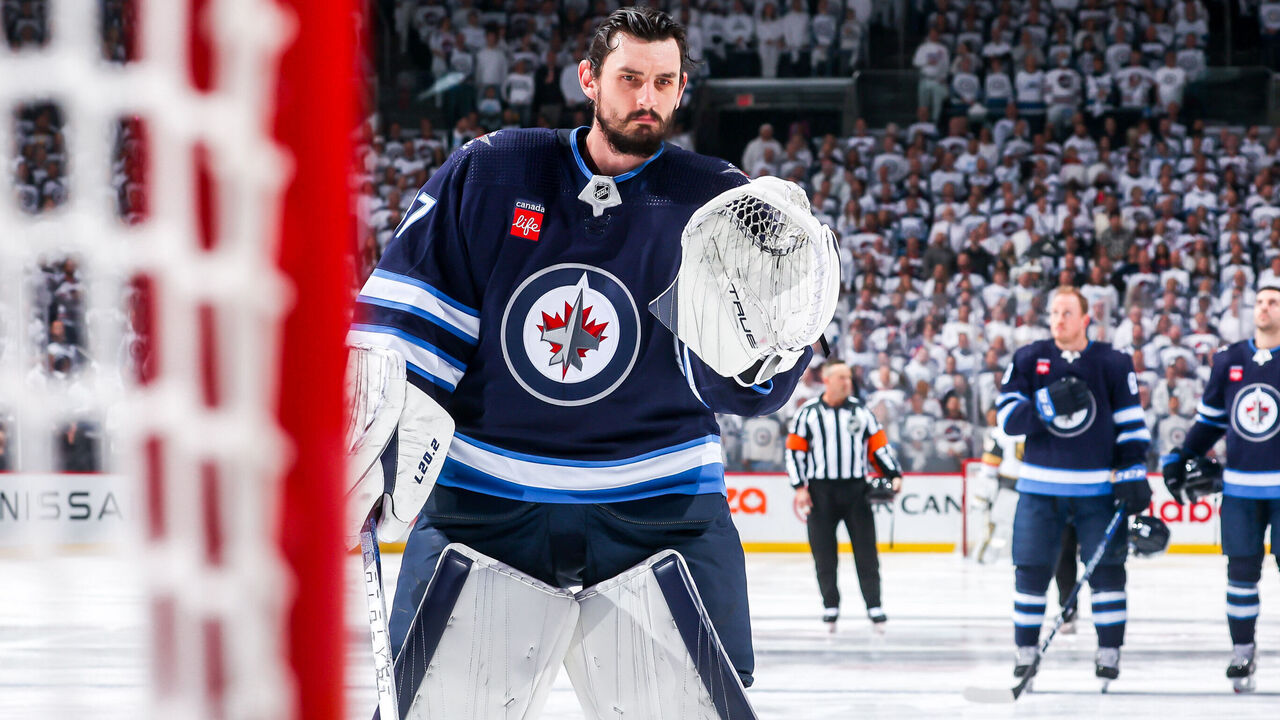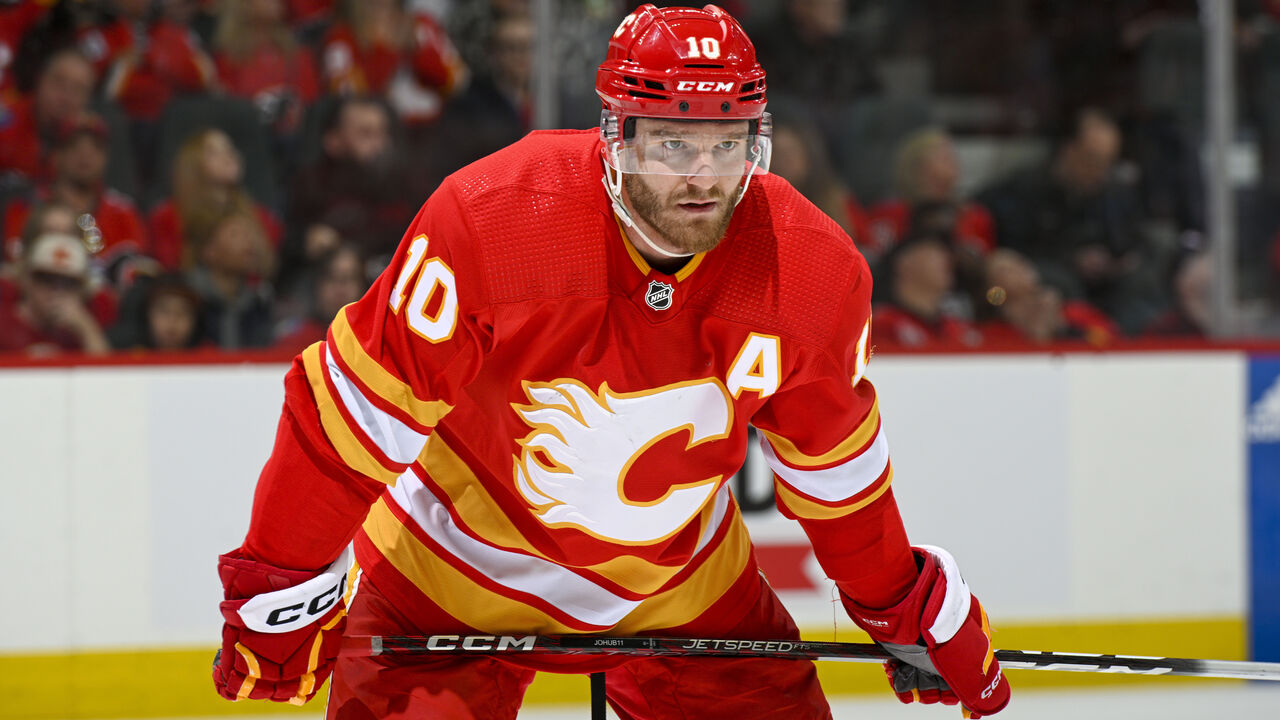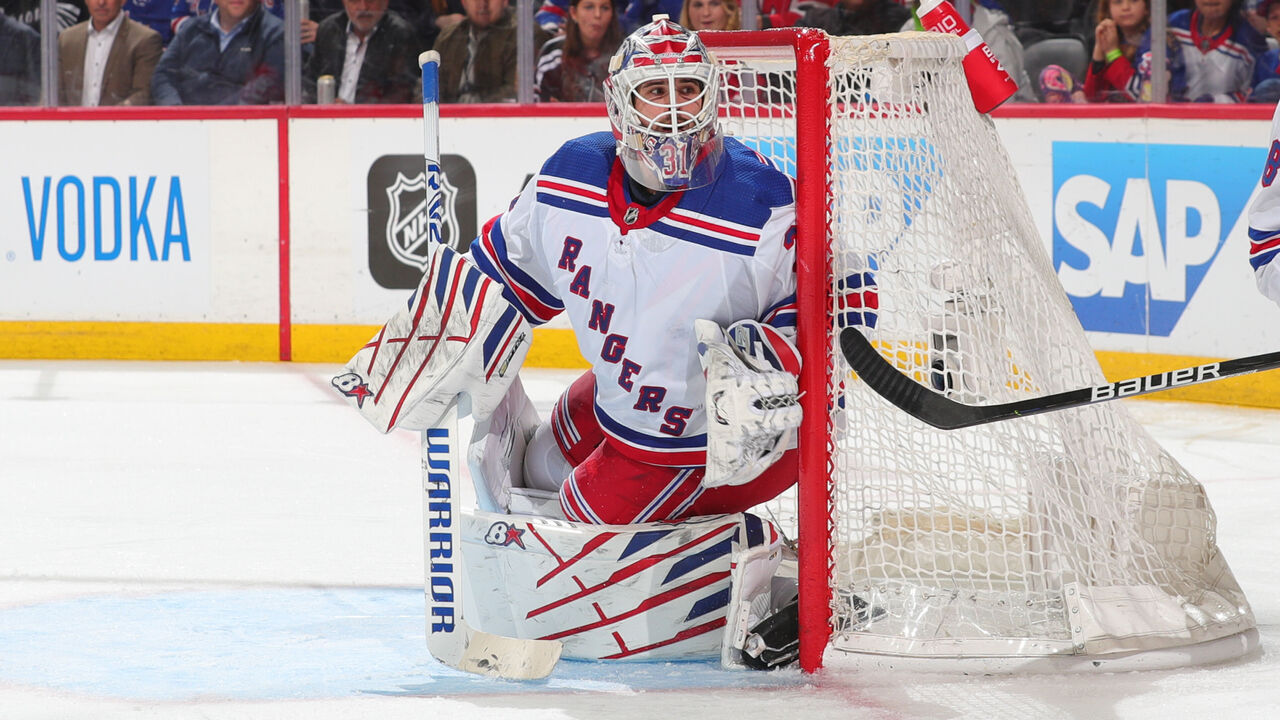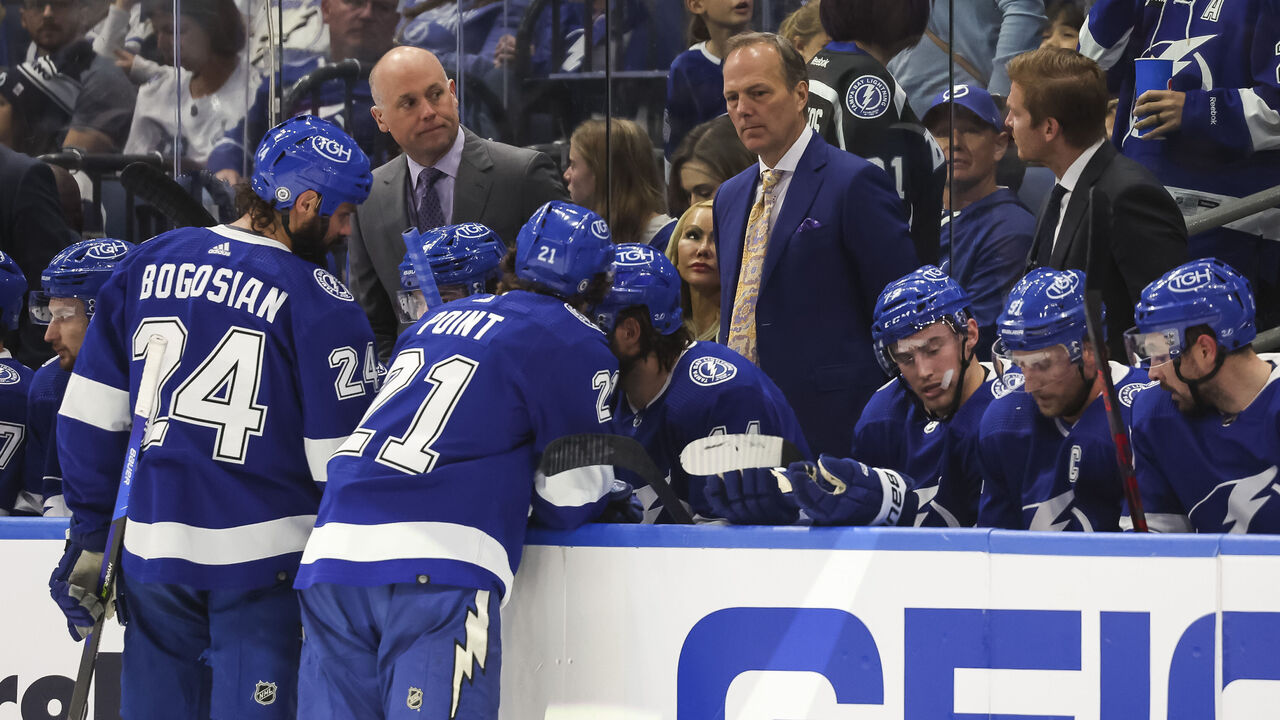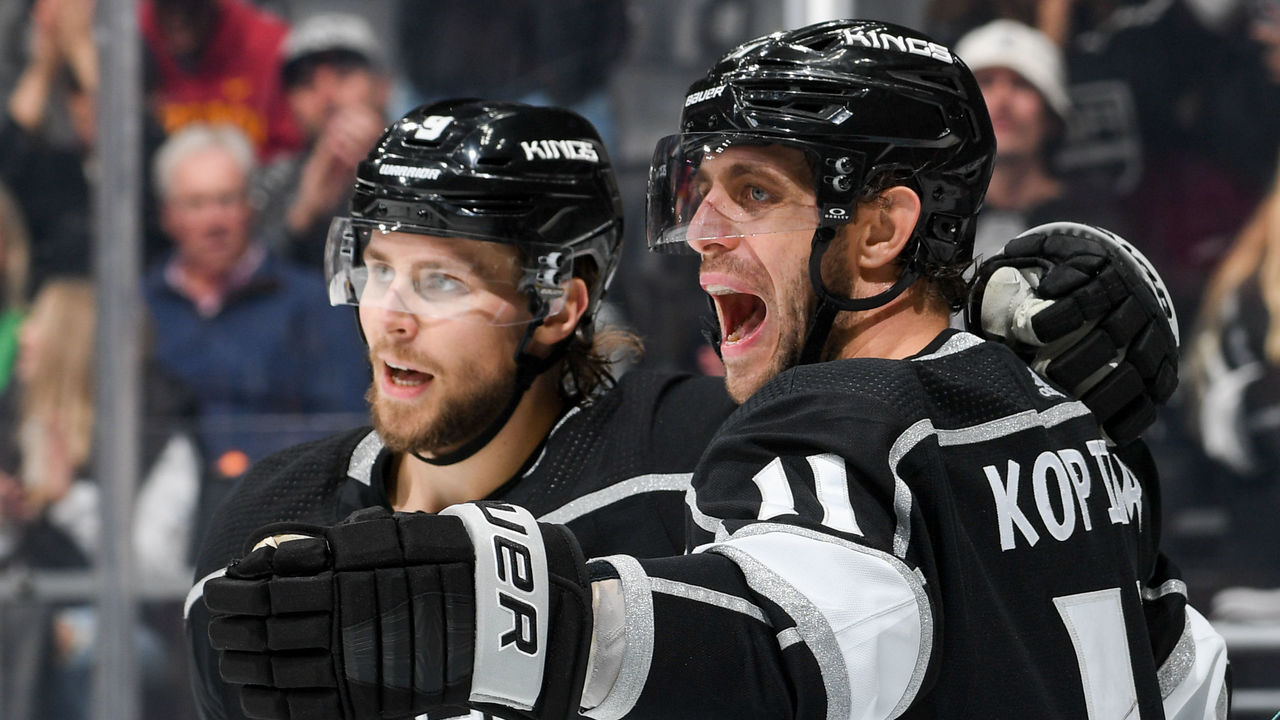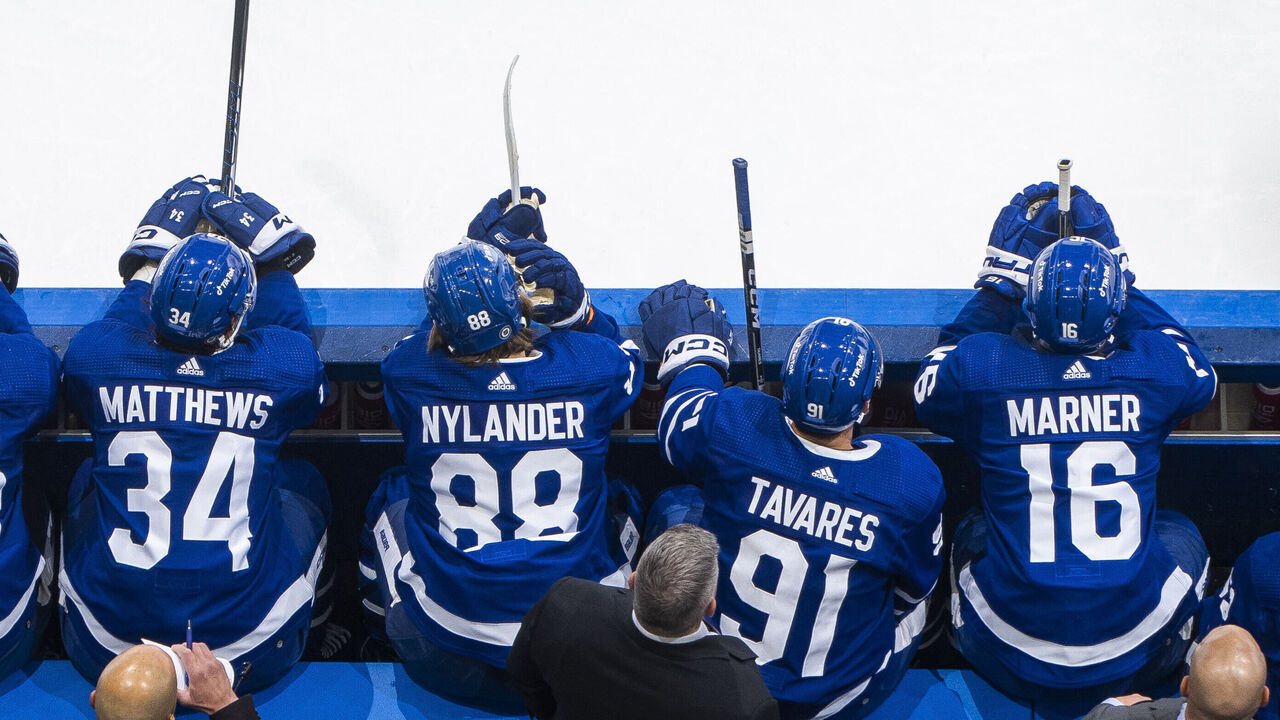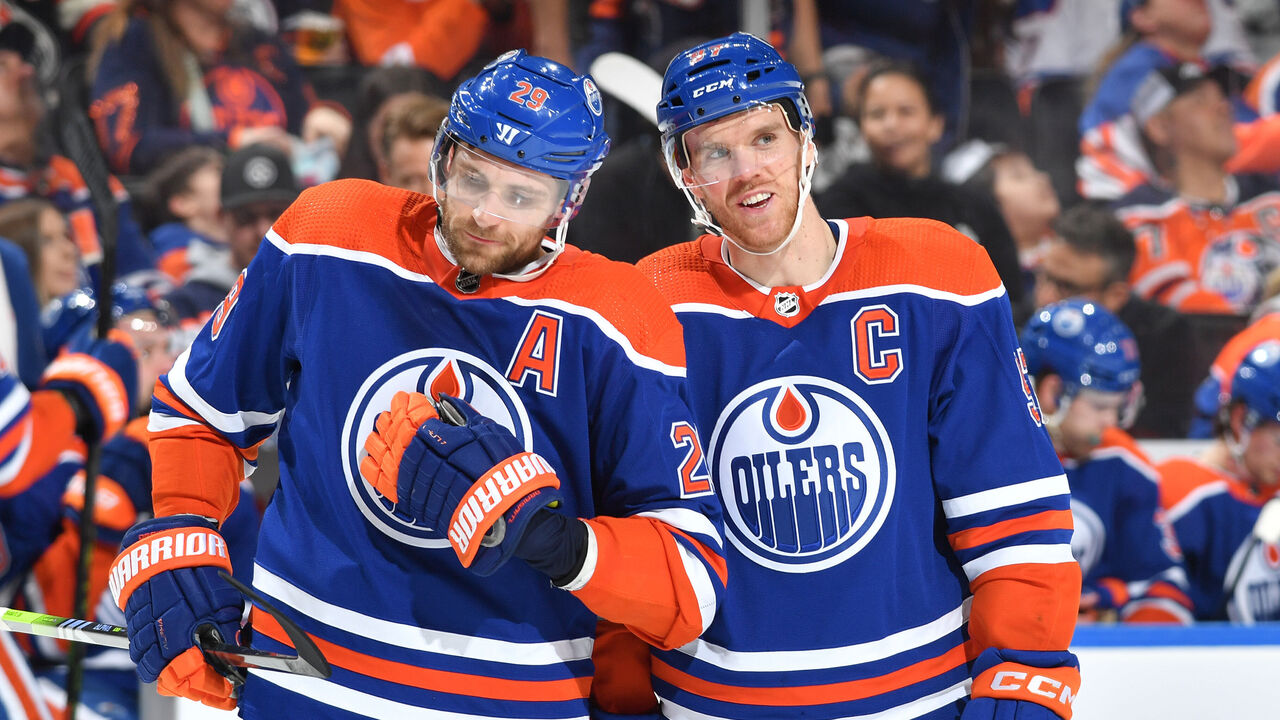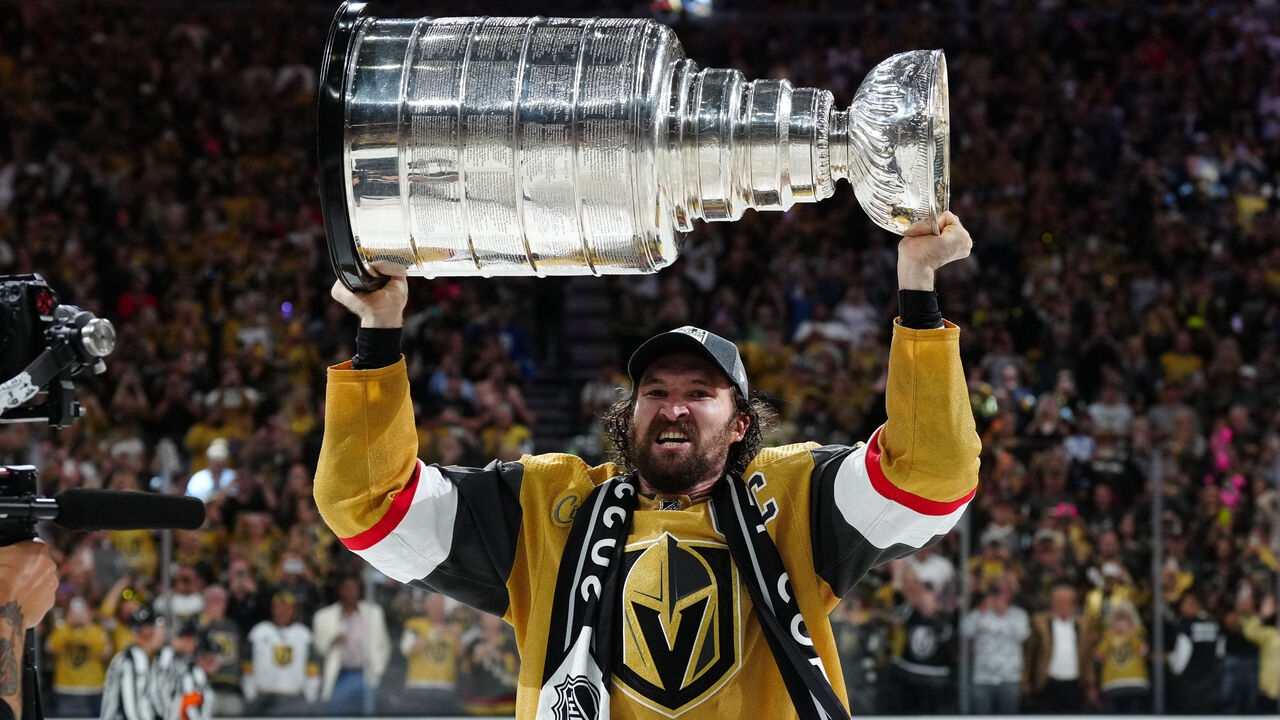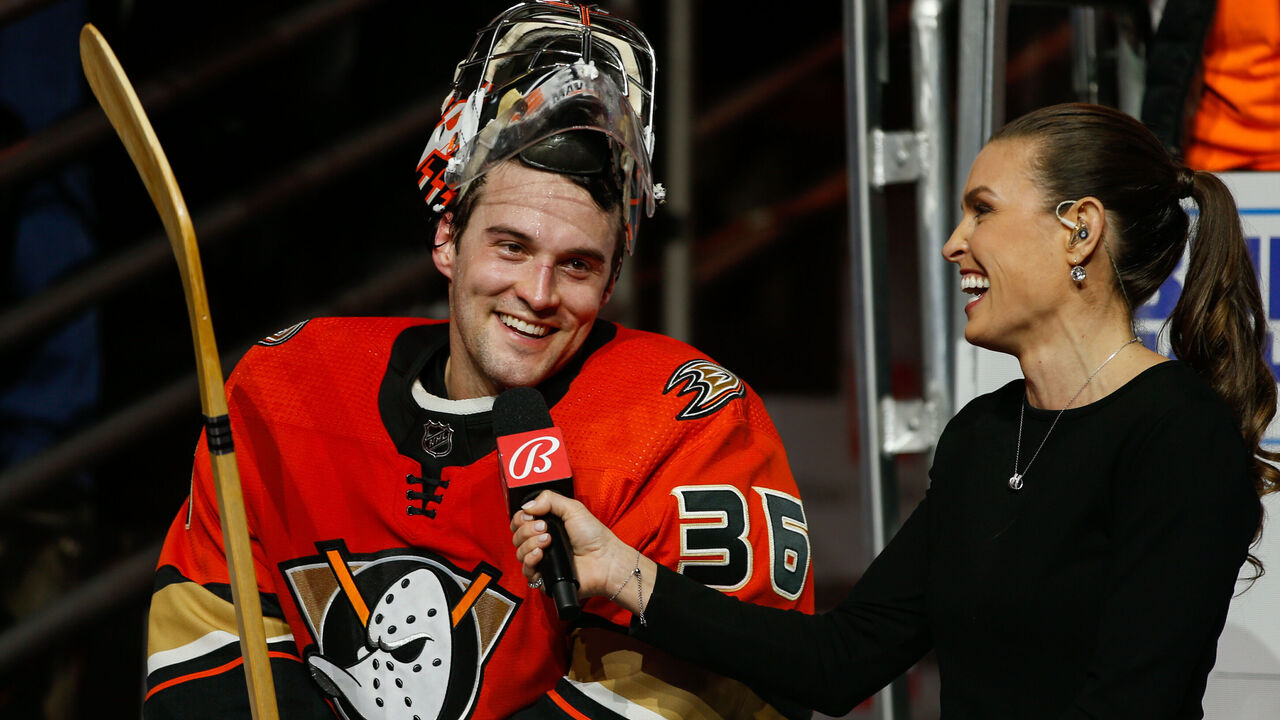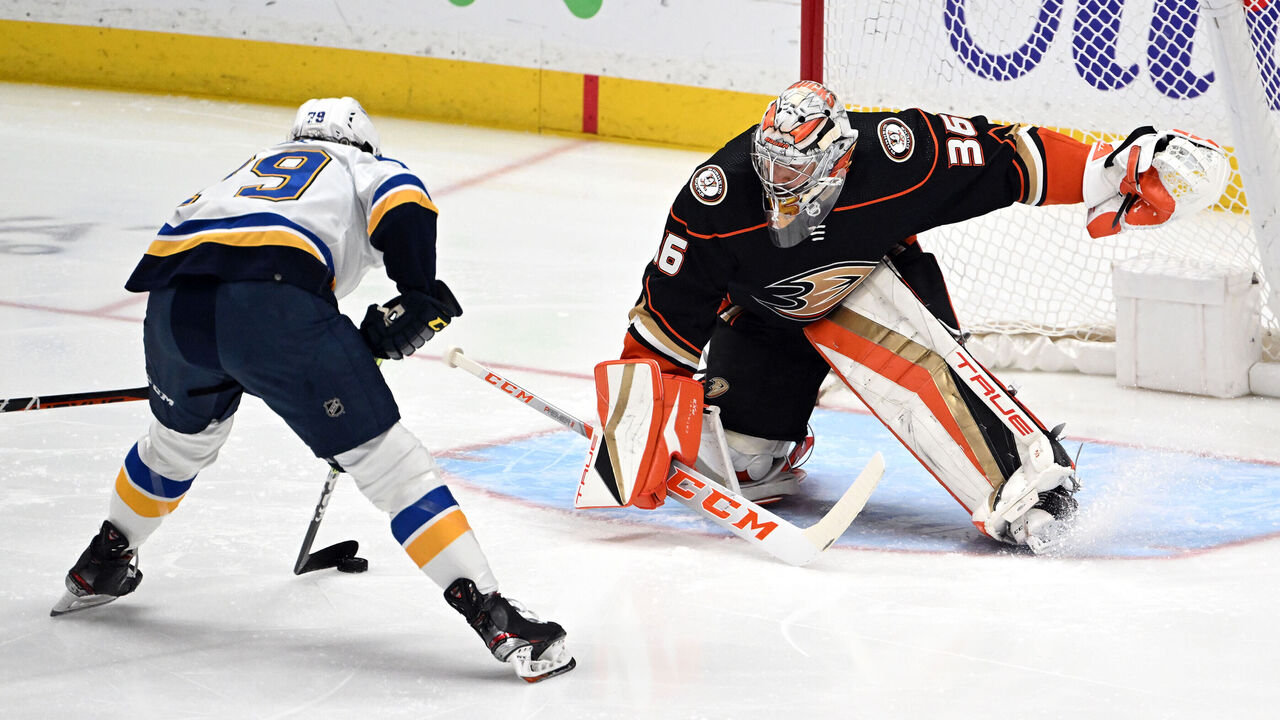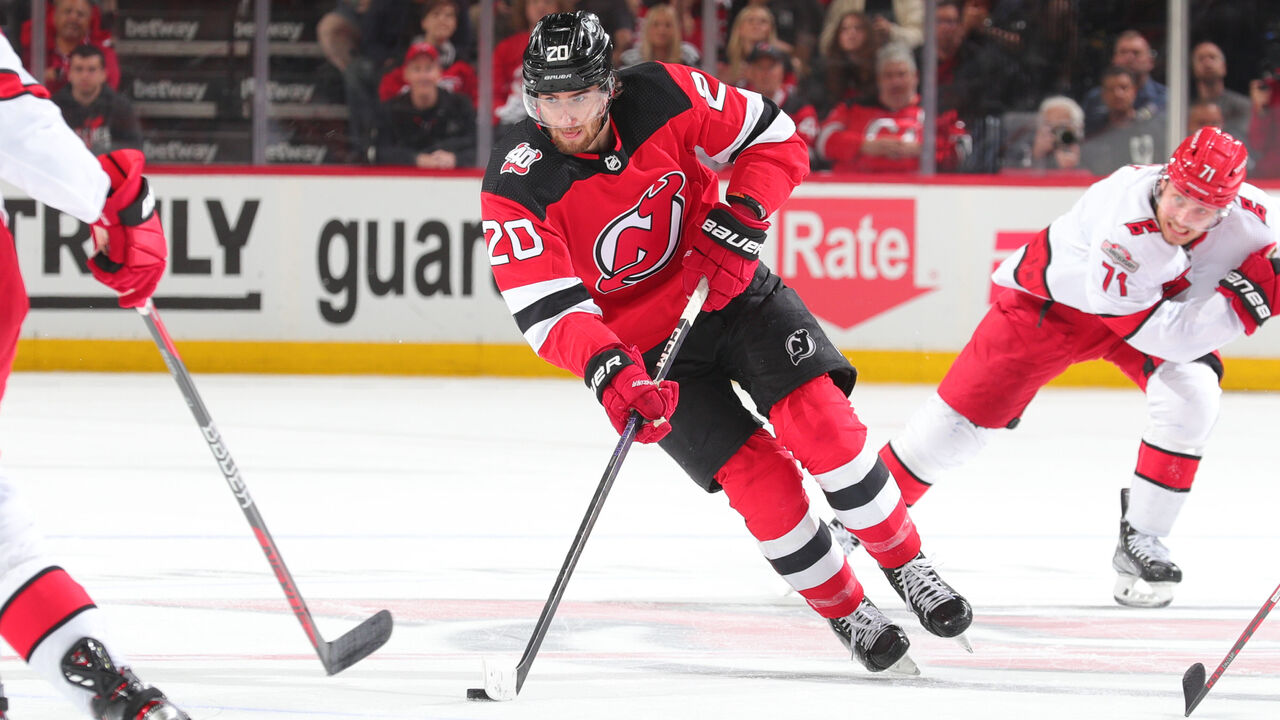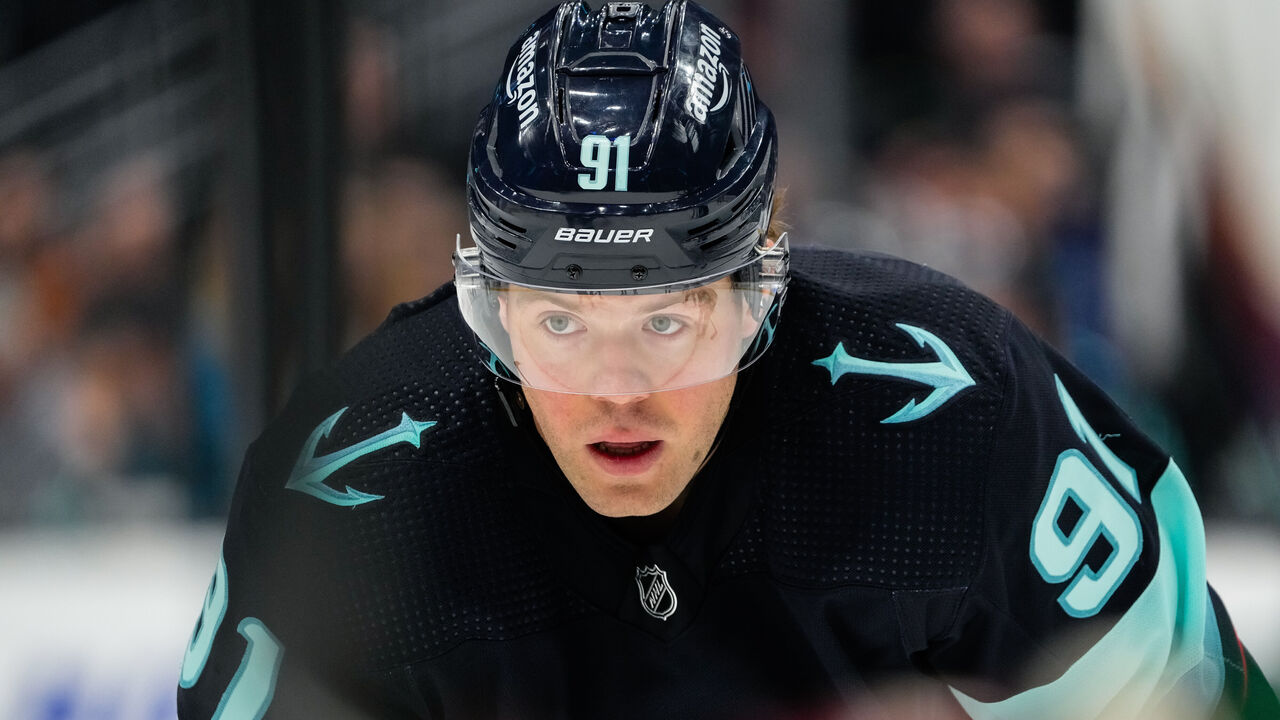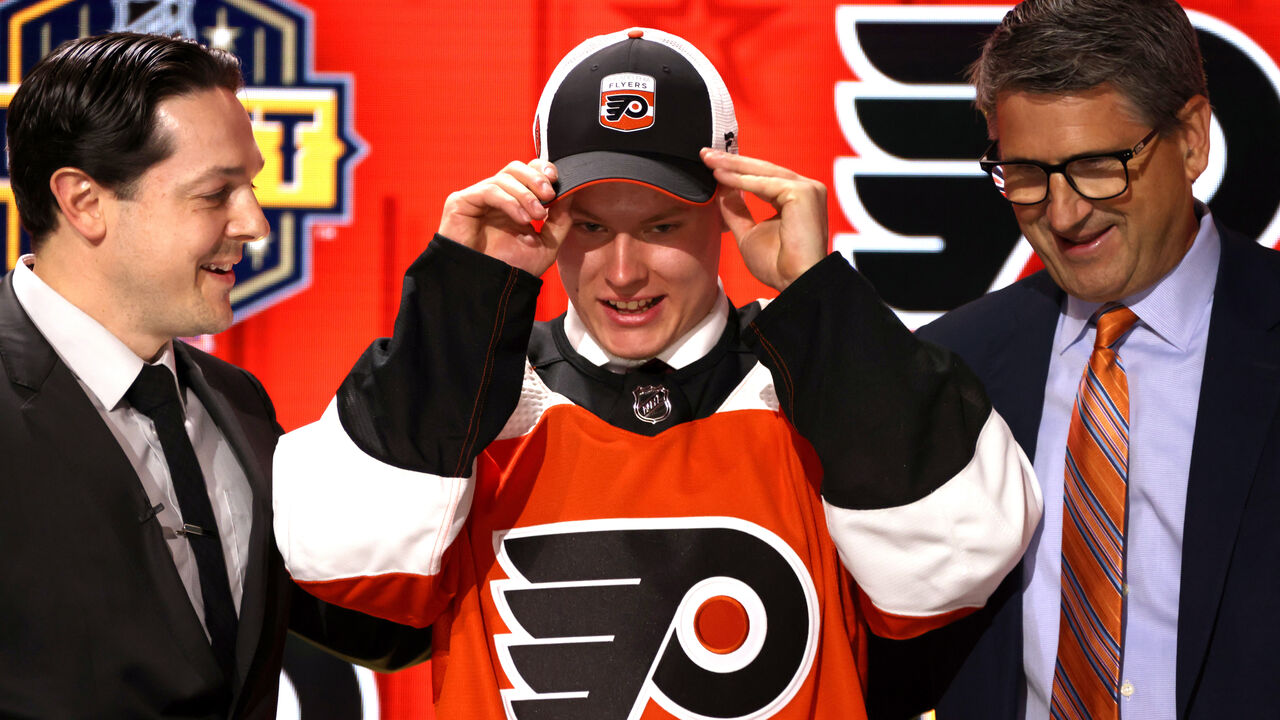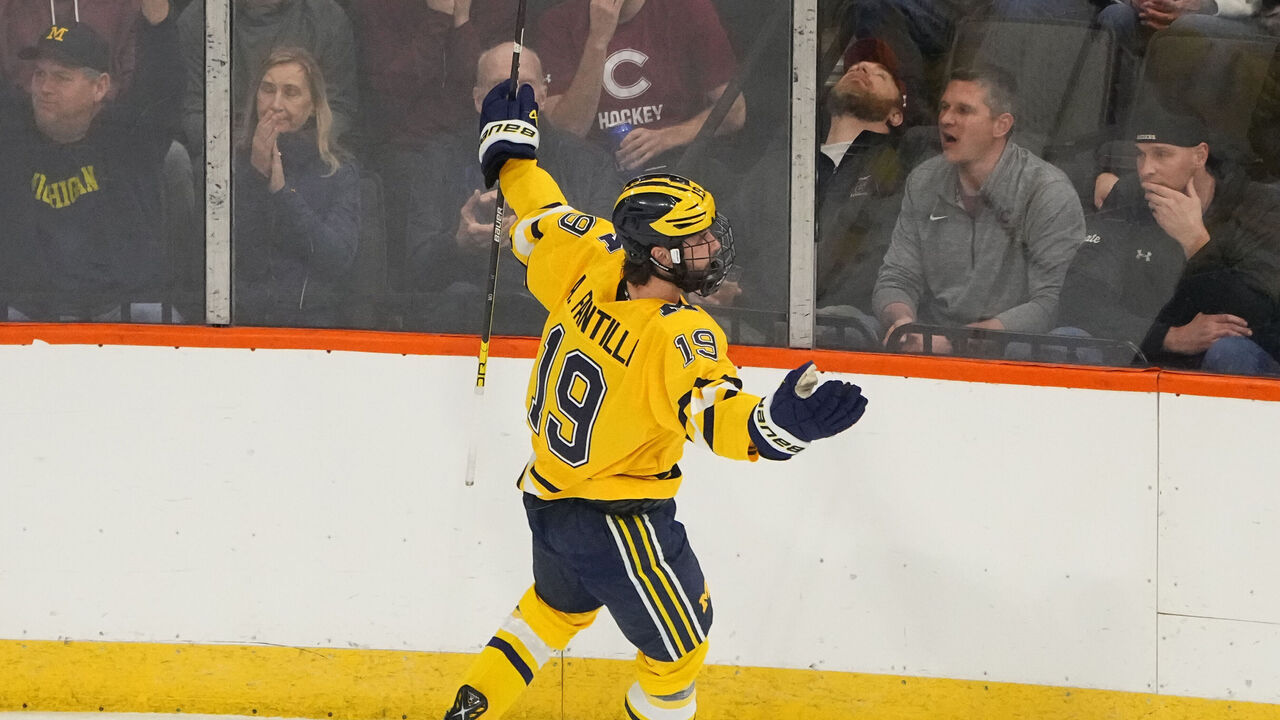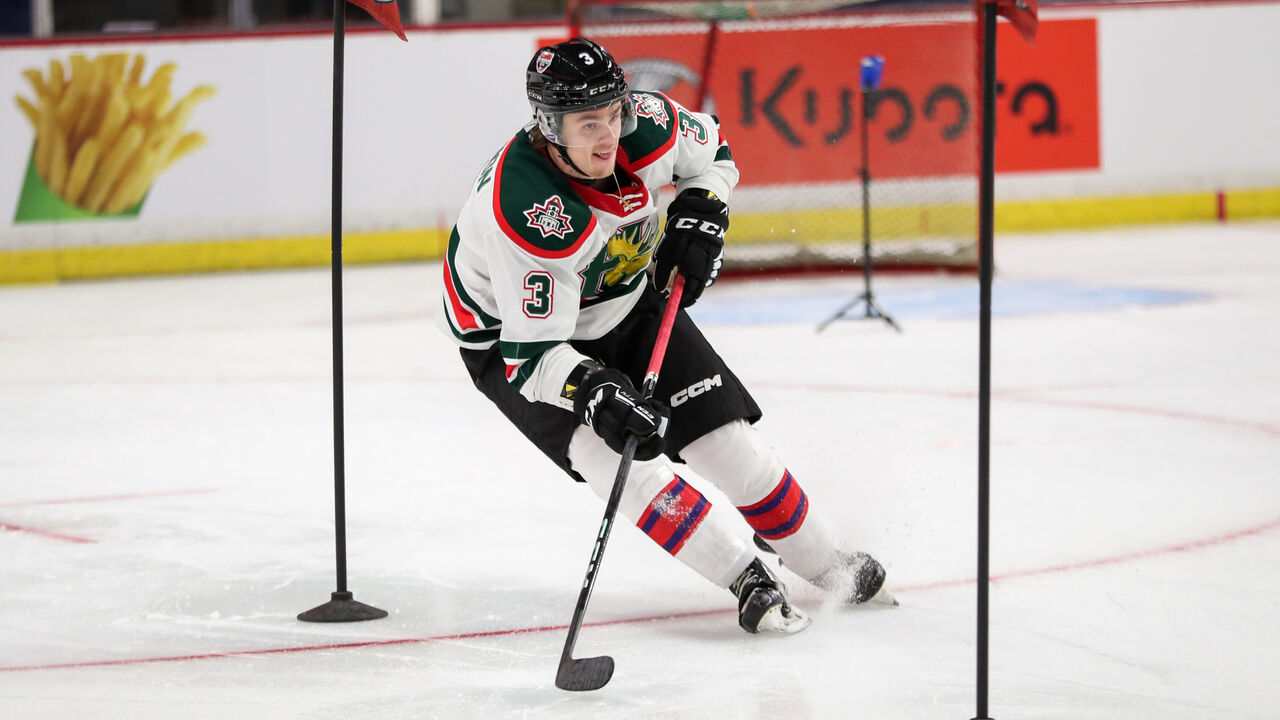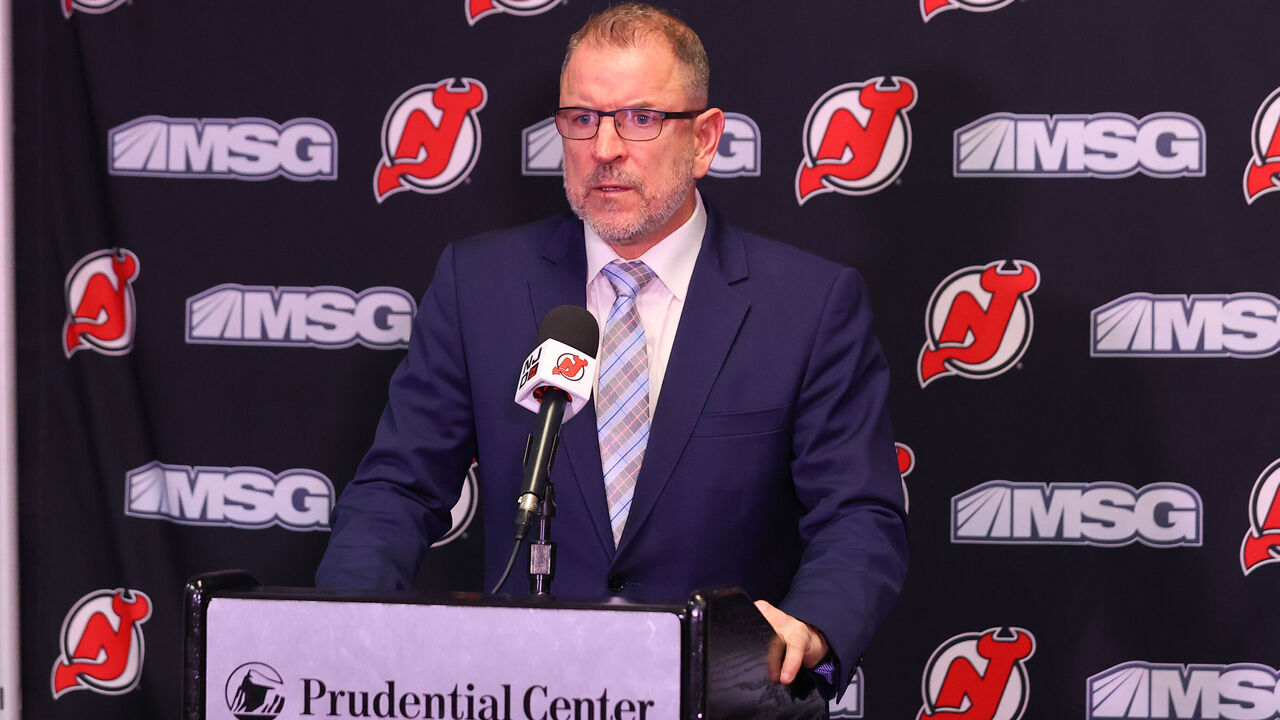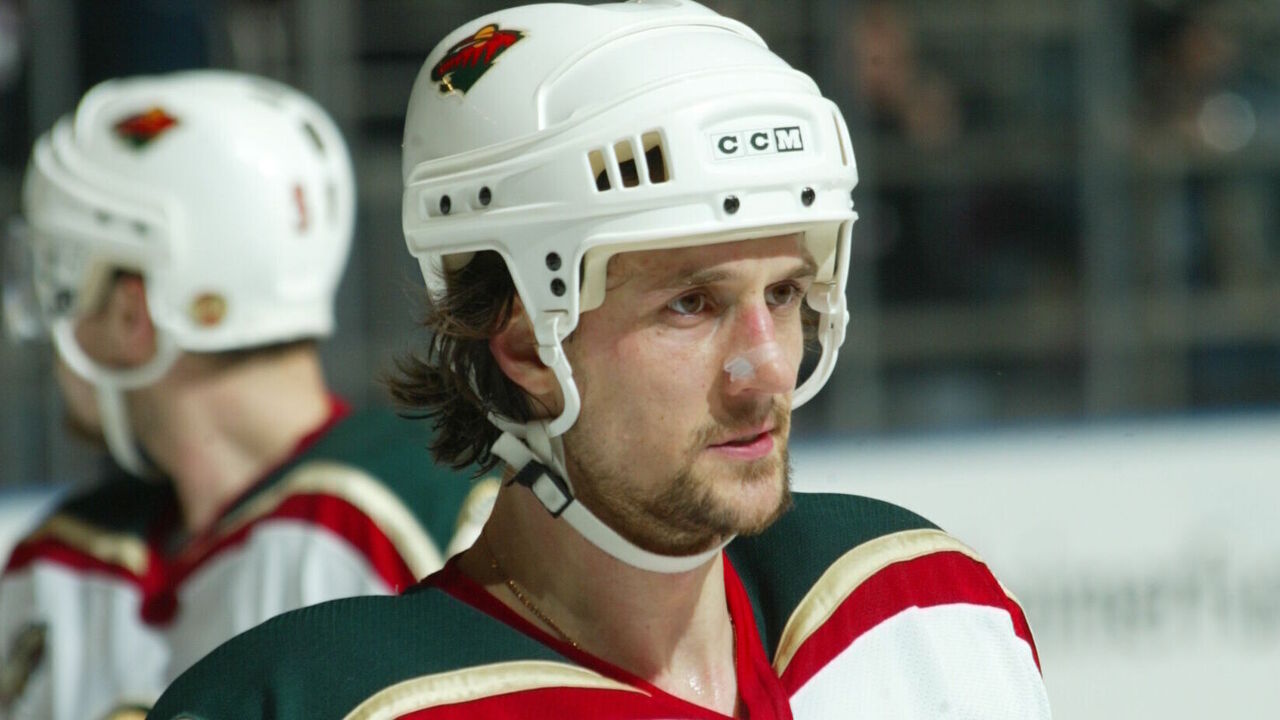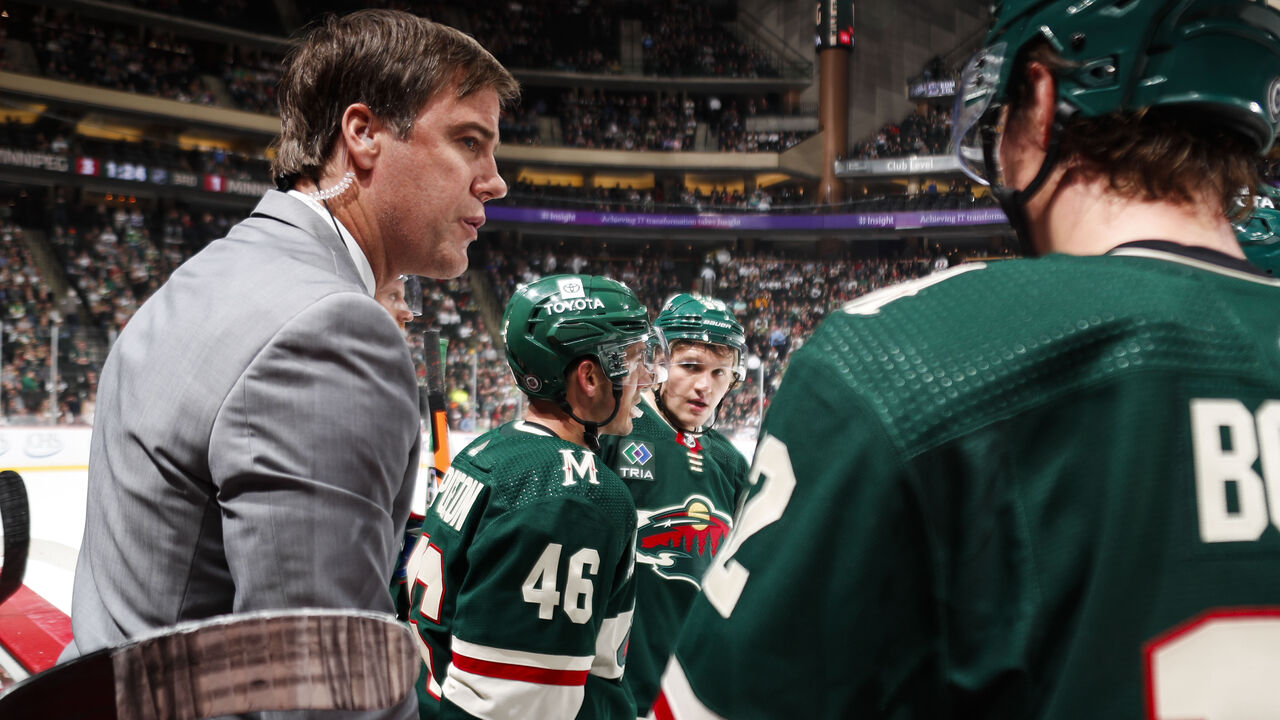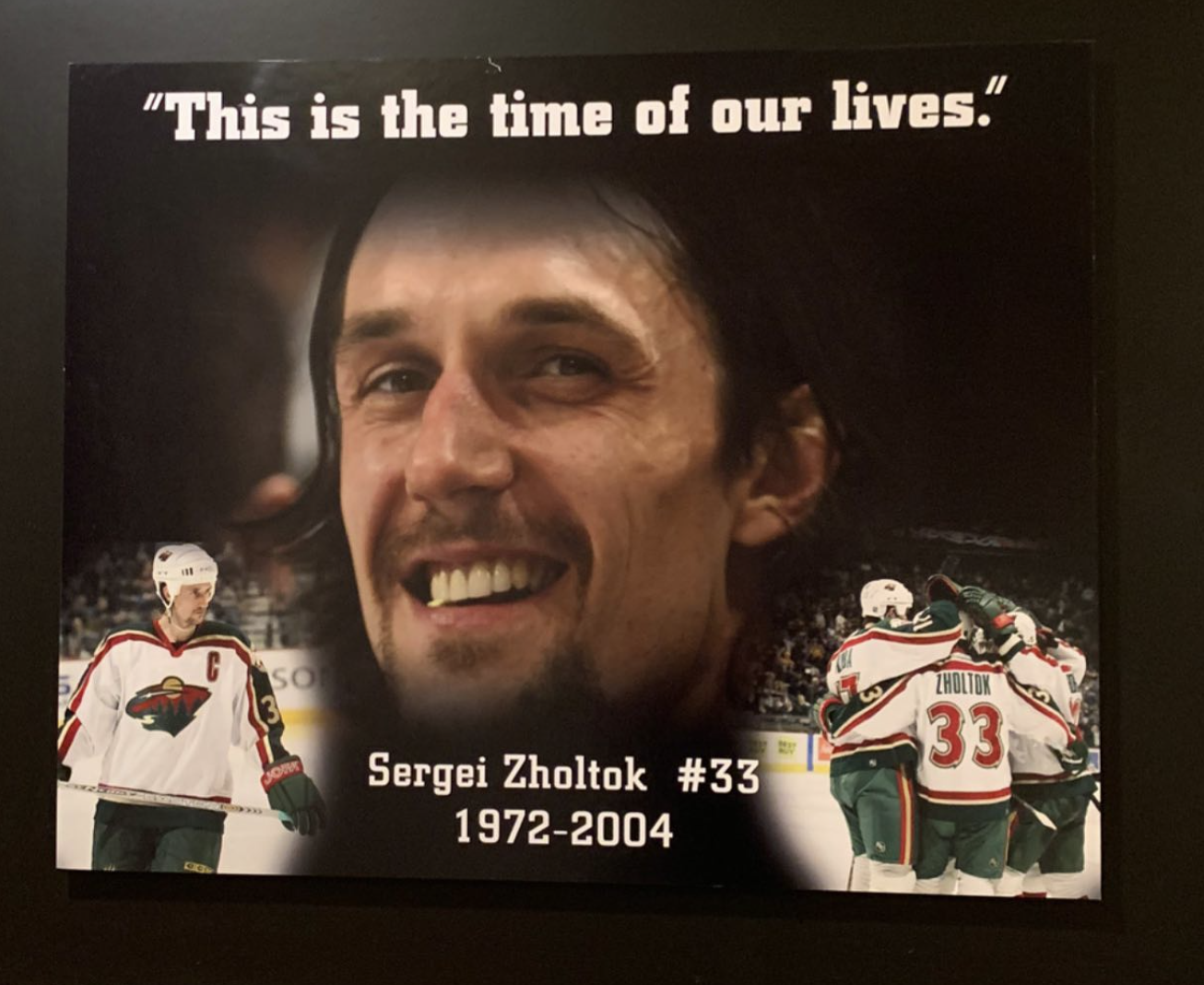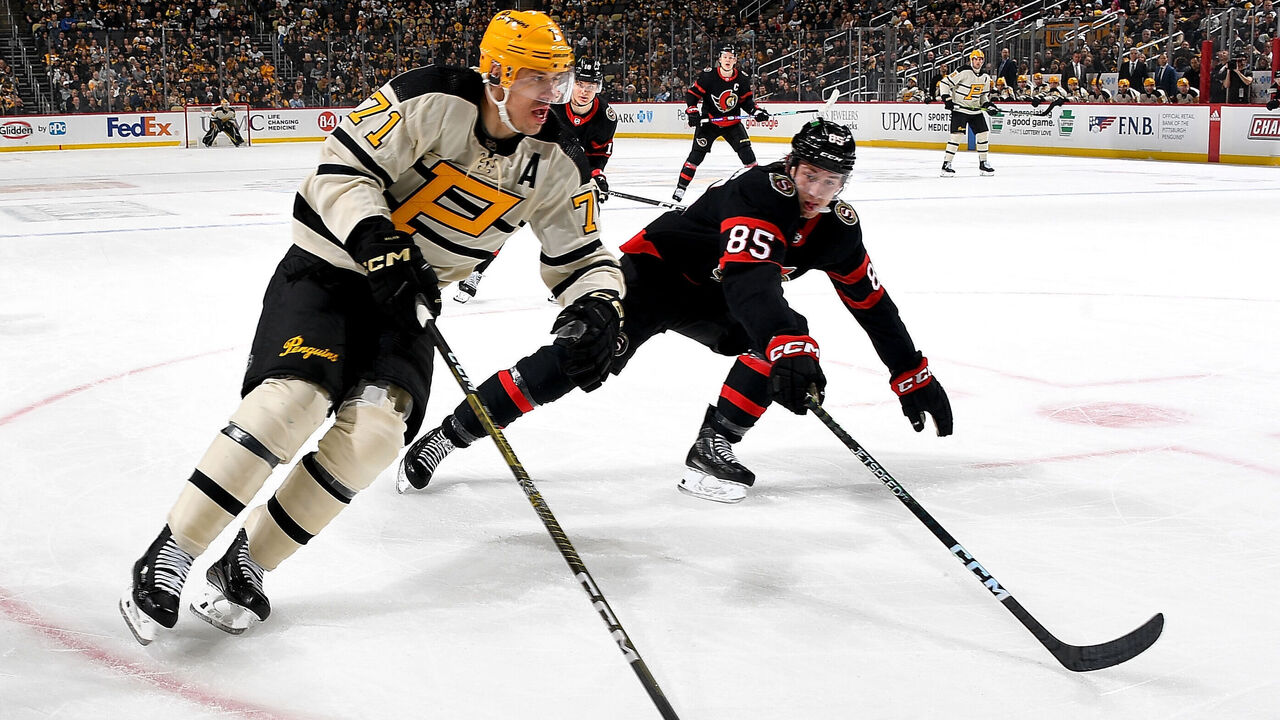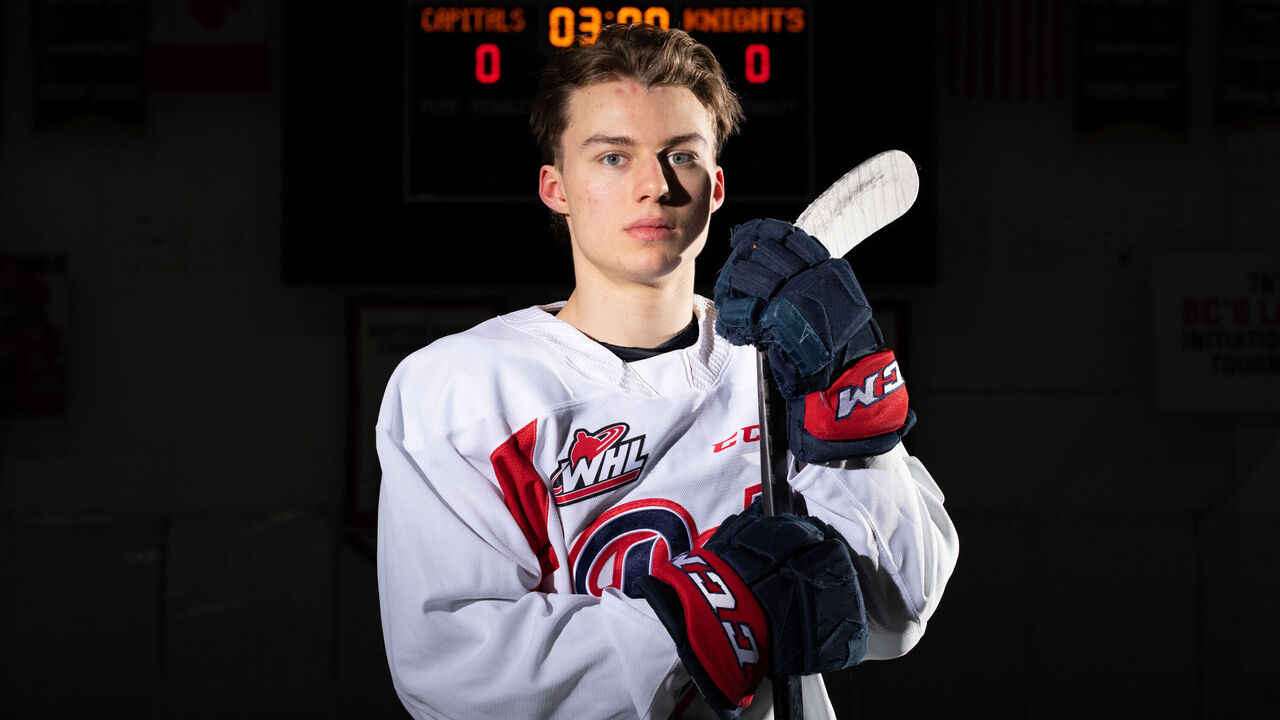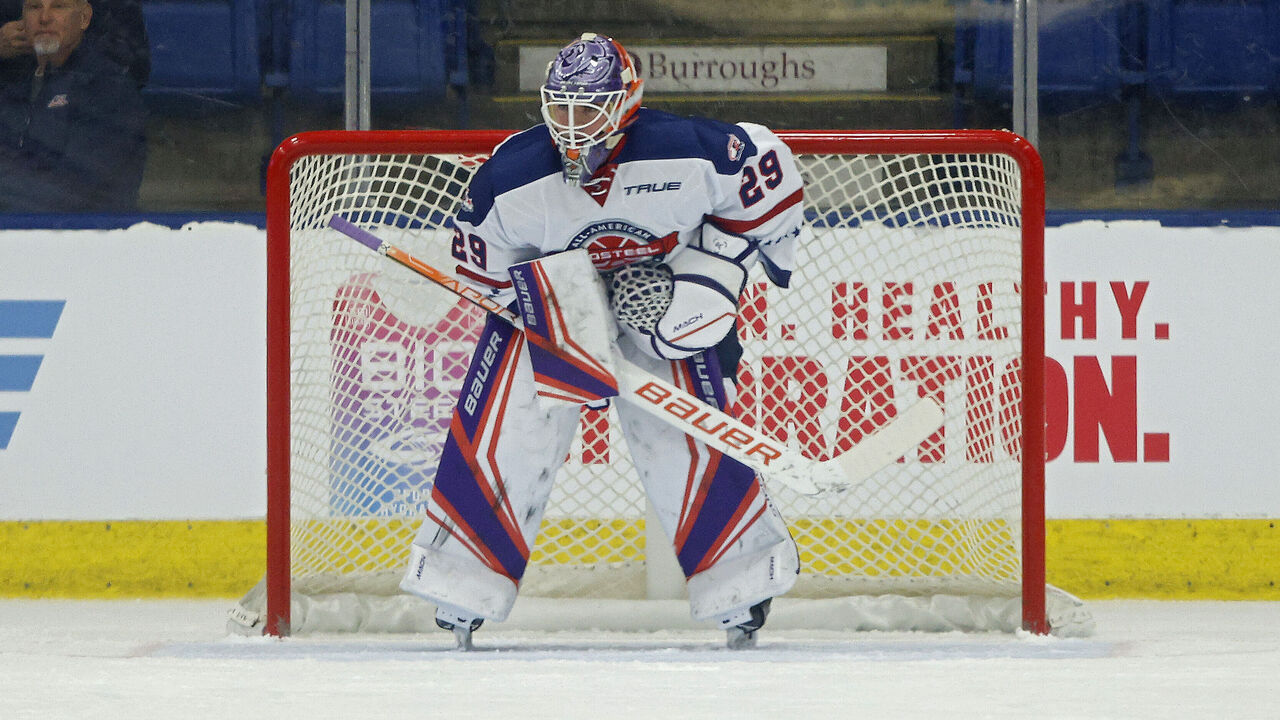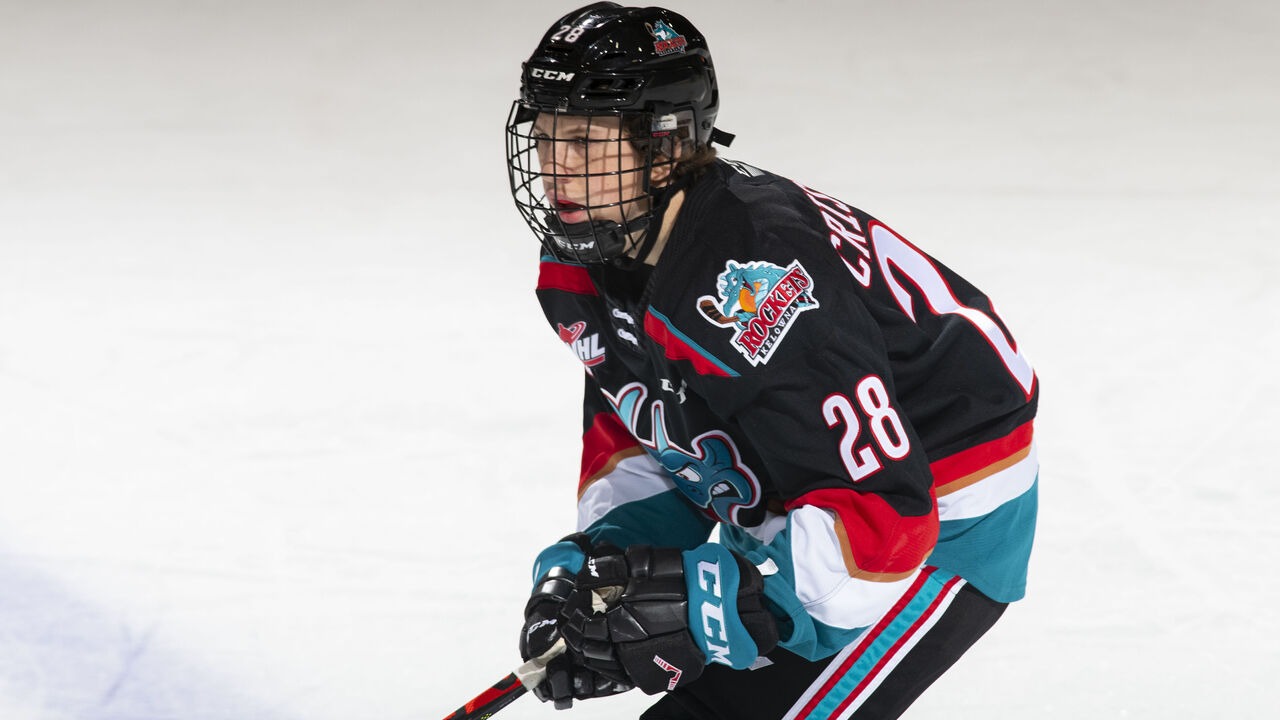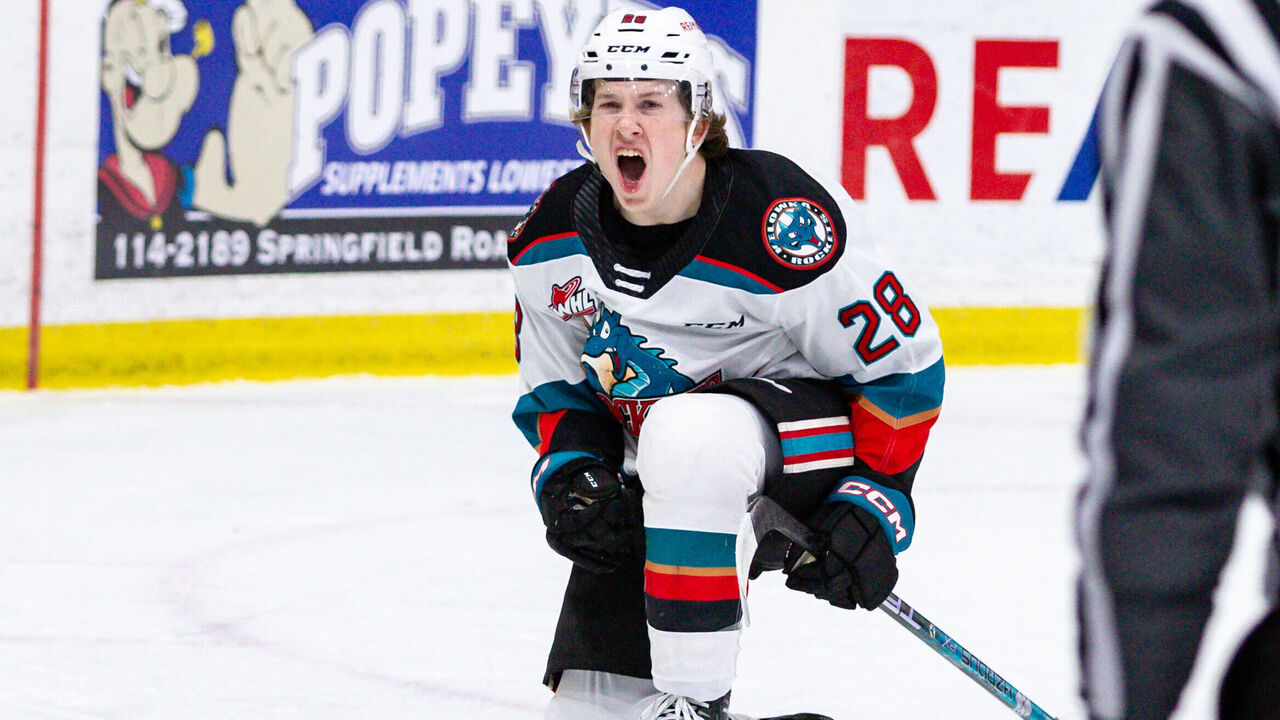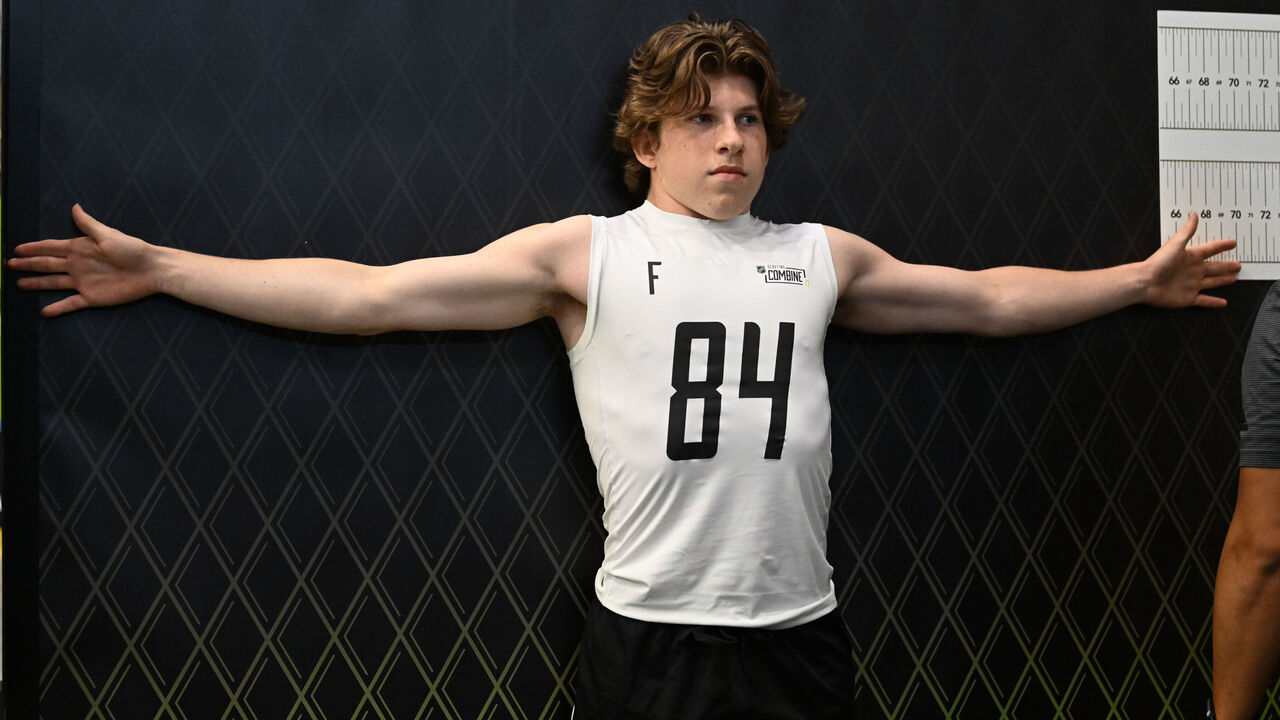The NHL offseason served up countless headlines, from Norris Trophy winner Erik Karlsson's trade to veteran coach Mike Babcock's firing before training camp. What should we make of all the change? Here are 24 predictions for 2023-24 - some long shots, others totally realistic, lots in the middle.
1. Matthew Tkachuk turns top five into top six
The order is debatable beyond No. 1, but Connor McDavid, Nathan MacKinnon, Auston Matthews, Cale Makar, and Leon Draisaitl are the consensus top five players on the planet. Tkachuk, already a top-10 guy, is more than capable of elevating his game to a level where he turns the top five into a top six by season's end. The Panthers' playoff run revealed the ultra-smart Tkachuk is on a steep upward trajectory - even after back-to-back seasons of 100-plus points and stellar defensive metrics. Last year's Hart Trophy finalist nod isn't the agitating, play-driving winger's ceiling. Winning the Hart is Tkachuk's ceiling, and it isn't out of the realm of possibility in 2023-24.
2. Sabres end historic drought

After 12 lost years, this is the season the Sabres snap the longest postseason drought in NHL history. It's the next logical step for a squad with the bones of a future Stanley Cup contender. I loved the trade-deadline bet on Jordan Greenway and the summer signings of Connor Clifton and Erik Johnson. Those three players add balance to an offense-focused group, while rookie goalie Devon Levi looks like the real deal. Last season was too early for Buffalo to throw a bunch of money around midseason, but it isn't early anymore, and the club happens to hold $8.8 million in cap space.
3. Connor Brown is league's best bargain
Excluding players on entry-level contracts, Buffalo's Tage Thompson had the lowest cost-per-point last season at $14,893 per point, according to CapFriendly. Brown's set up to steal the title from Thompson (whose salary is jumping from $1.4 million to $7.1 million) after landing with the Oilers on a one-year, $775,000 deal. An injury limited Brown to four games in 2022-23, but the 29-year-old is fully healthy and may land a spot on former OHL teammate McDavid's line. Brown, who recorded a career-high 43 points for Ottawa four seasons ago, is a poor man's Zach Hyman - relentless on the puck, tough around the net, a sharp hockey mind, and responsible defensively. Brown's biggest contender for "best bargain" is probably Blake Wheeler, who's making $800,000 for the Rangers after a Jets buyout.
4. Jeremy Swayman takes over Bruins' crease
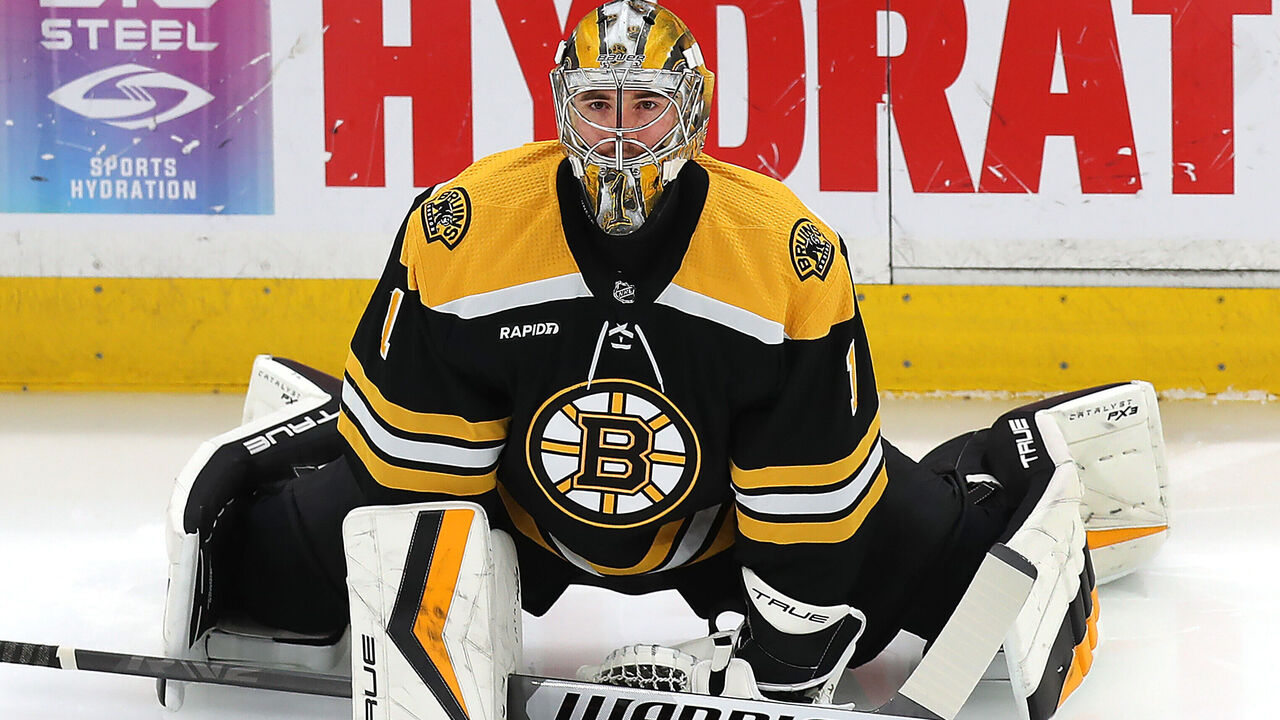
Linus Ullmark enjoyed a season for the ages last year, posting a .938 save percentage and saving 38.1 goals above expected (per Evolving-Hockey) in 49 games en route to the Vezina Trophy. Compiling similar numbers will be nearly impossible, especially with elite stoppers Patrice Bergeron and David Krejci no longer lining up at center. Swayman, meanwhile, was on a starter's trajectory before Ullmark arrived in Boston. The 24-year-old American is fresh off a fine year himself and should be given every opportunity to surpass Ullmark as the go-to netminder in a 1A-1B setup. Ullmark trending downward while Swayman has more to prove sets the stage for a role shuffle.
5. UFA class (for once) lives up to the hype
There's a pattern to how we discuss the upcoming unrestricted free-agent class: we get excited about the quantity or quality (or both) in the fall, half the interesting names sign extensions, and by July 1, the hype is all but gone. Well, I think the 2024 UFA class will buck this trend. Players have strategically set themselves up for hefty paydays as the salary cap jumps from $83.5 million to $87.7 million in 2024-25 and $92.1 million in 2025-26. Steven Stamkos, Connor Hellebuyck, Elias Lindholm, Mark Scheifele, William Nylander, Jake Guentzel, and Brandon Montour headline the class. The second tier is strong, too, with Jonathan Marchessault, Sam Reinhart, Noah Hanifin, Tyler Bertuzzi, Teuvo Teravainen, and Brett Pesce leading the way.
6. Berube is first coach or GM fired

Technically, Mike Babcock already claimed this unwanted prize. But we're not going to count his firing forced resignation since it happened prior to Blue Jackets training camp. Berube, the league's fifth-longest tenured coach, is ostensibly on the hot seat in St. Louis. The good vibes generated by the Blues' magical 2018 Cup win are gone, and longtime general manager Doug Armstrong's next move may be to can the coach. In the past, Berube hasn't seen eye-to-eye with the club's star players, and the roster seems to be in transition in general. Of note: Ownership won't be on the hook for too much money if the Blues let Berube go soon. He reportedly makes $3.5 million a year and is under contract for one more season.
7. League-wide scoring steadies
The NHL's scoring rate increased in four of the past five seasons, with 2022-23's 6.4 goals per game counting as the highest average since 1993-94. I expect scoring averages to stabilize this season, but the rate will finish around 6.4 again because the NHL is cyclical, and coaches now have sufficient video and data on modern offenses. Led by the goaltenders, defenses are finally ready to push back in a discernible way. To be clear: I'm not predicting a notable dip in scoring, or the end of an entertaining, offense-first era. But it feels like the timing is right for the year-over-year climb in goals to cool off ever so slightly.
8. Quinton Byfield breaks through
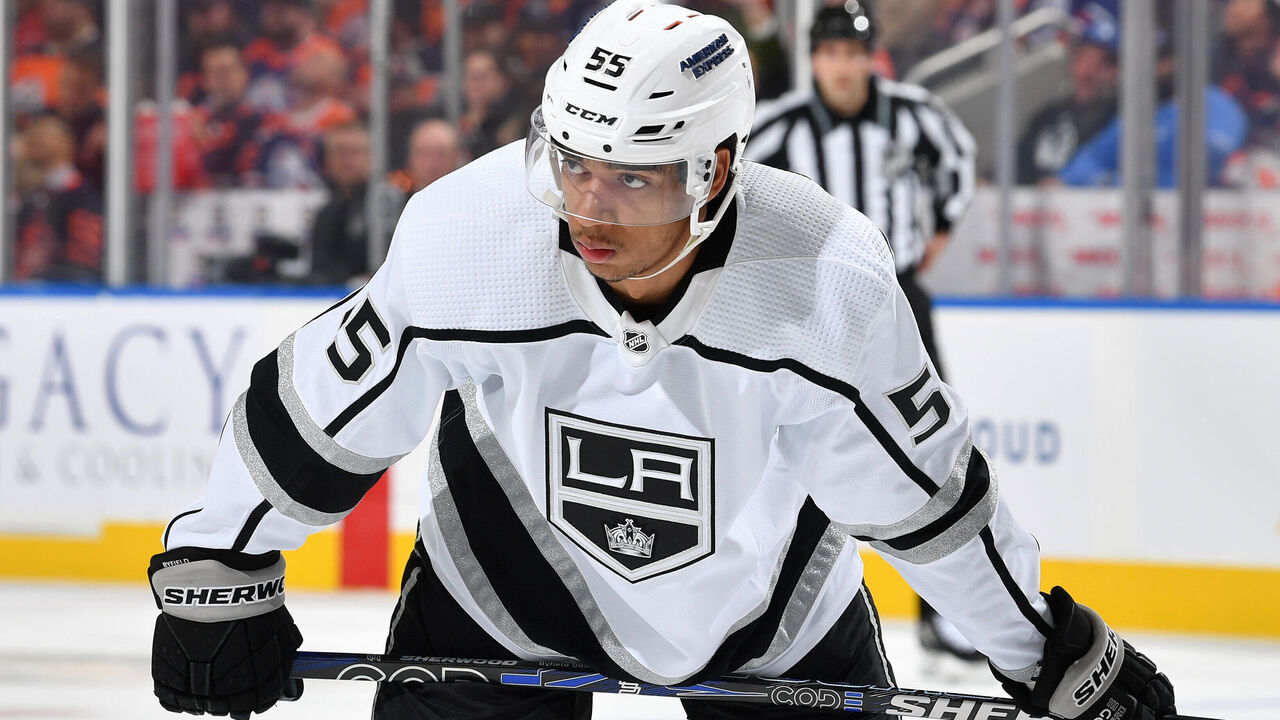
Word out of Kings camp is Byfield's found his swagger. The 6-foot-5, 220-pound forward is competing with the confidence of a second overall pick and will likely spend the full season in the NHL for the first time. Now, here's what a breakout will look like for Byfield: about 15-20 goals (previous high of five) and 30-35 assists (previous high of 19) for around 50 points. The 21-year-old is especially effective when he's hard on the forecheck and firing shots off quickly, and he found promising chemistry with veteran studs Anze Kopitar and Adrian Kempe late last season.
9. Full steam ahead for next World Cup
Let's be optimistic about the future of international hockey for a moment. The plan right now is for NHLers to compete in a scaled-down World Cup of Hockey in February 2025, then participate in the 2026 Olympics. The World Cup won't be perfect - nothing beats the Olympics, and with Russia's status up in the air, the event won't be a traditional eight-team tournament. Nevertheless, it could be sensational. The 2016 World Cup is the lone time McDavid, MacKinnon, Matthews, and their Gen Z peers played in a best-on-best format - and even then, they were part of a gimmicky under-23 team. Here's to finalizing 2025 and getting back on the right path.
10. Vasilevskiy injury sinks Lightning

Tampa Bay received the biggest blow of the preseason last week: superstar Andrei Vasilevskiy is out for the first two months of the regular season after undergoing back surgery. Jonas Johansson, a 28-year-old journeyman who's appeared in 35 NHL games, is now atop the goaltending depth chart, which is wild (we thought Johansson backing up Vasilevskiy was suboptimal). Unless the Lightning get extremely creative, their options to bring in outside help are limited. They're up against the cap and barely have any draft capital to burn. The Atlantic Division remains highly competitive, so the Vasilevskiy injury, especially when mixed with depth depletion at forward, is a ruinous development. It'll sink their season.
11. Jets re-sign one pending UFA star, trade the other
Winnipeg's a bubble playoff team as currently constructed. If the Jets make it, nobody will be terribly surprised. Ditto if they don't. In other words, the club is in the league's mushy middle, which isn't ideal given 30-year-olds Scheifele and Hellebuyck are both pending UFAs. It'd be unwise for GM Kevin Cheveldayoff to sign both players to long-term extensions - not because they're unworthy of lengthy deals, but because the Jets need to fully turn the page. Buying out Wheeler and trading Pierre-Luc Dubois isn't a big enough change. I think Cheveldayoff should trade Scheifele and Hellebuyck midseason. What he'll probably do instead: try to sign both, find out one of them probably isn't interested, and be forced to make a trade.
12. Penguins return to playoffs, fall short of conference finals

Intrigue is high around the Penguins after new GM Kyle Dubas landed Norris winner Karlsson in the trade of the summer while also reeling in secondary scoring help (Reilly Smith), a defensively minded center (Lars Eller), and a useful defenseman (Ryan Graves). If the veteran-laden Pens can stay healthy, they should have no trouble securing an East playoff spot. However, even with Karlsson joining Sidney Crosby, Evgeni Malkin, Kris Letang, and Co., Pittsburgh isn't a top-tier Metropolitan team. Getting past the Devils and Hurricanes will be a tall task.
13. Hischier wins first Selke of post-Bergeron world
Bergeron's retirement means he'll finally release his grip on the Selke Trophy. Nico Hischier, who finished second in voting last year, is the candidate to circle in pen. He's the chief defensive center on a Cup-contending team. He leads the Devils' top-five penalty kill. His metrics are tremendous across the board, from traditional to shot-based to tracking. The definition of the award focuses on a forward who "best excels in the defensive aspects of the game," but voters typically loop in two-way ability - and Hischier checks that box as well (80-point guy). A side prediction for the hell of it: Elias Pettersson and Roope Hintz will be Selke runners-up.
14. Blue Jackets' PP goes from bottom 10 to top 10
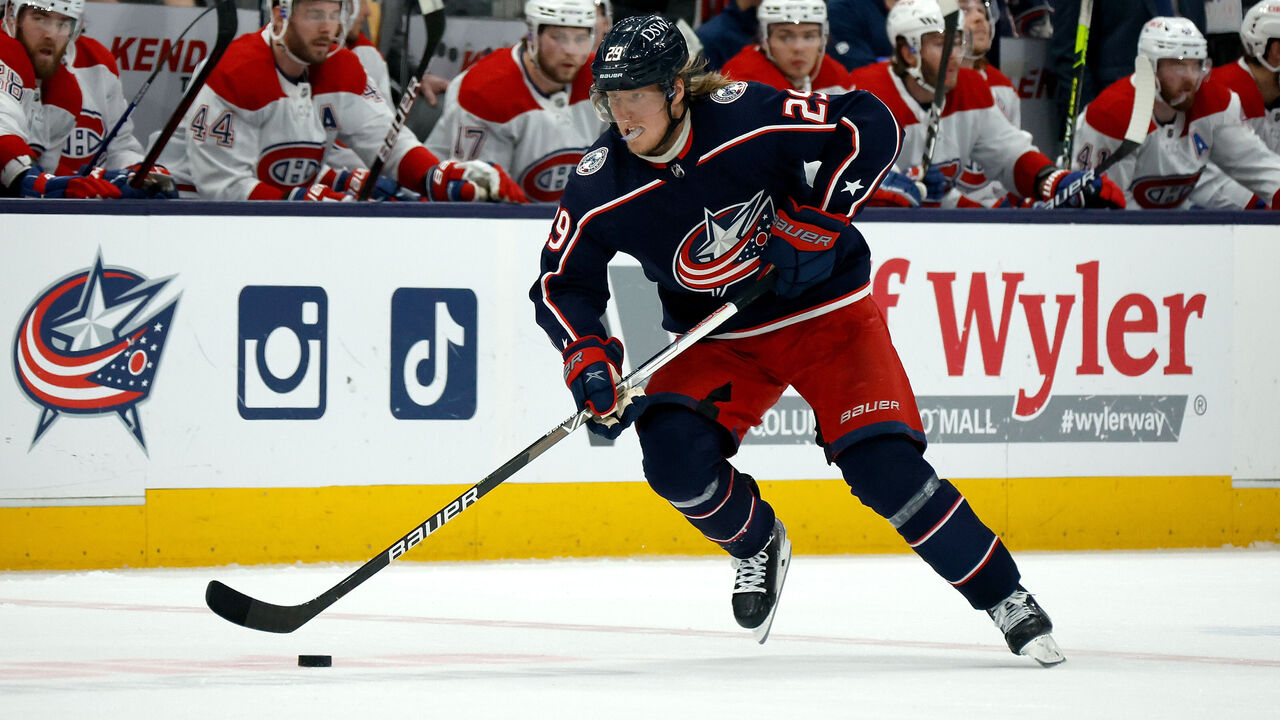
I refuse to believe the Blue Jackets' underwhelming 2022-23 power-play percentage - 18.3%, or 3 percentage points below the league average - will carry over. Not with new assistant coach and Hockey Hall of Famer Mark Recchi at the whiteboard. Not with Zach Werenski's quarterbacking ability, Patrik Laine's and Kirill Marchenko's booming shots, and Adam Fantilli and Johnny Gaudreau's zone entries and seam passes. There's a ton of untapped potential here, as only Gaudreau played 60 or more games last year (Fantilli was in college). I wouldn't bet on Columbus earning a postseason spot, but its power play - previously ranked 26th in the NHL - can crack the top 10.
15. Hurricanes win Presidents' Trophy
Carolina's floor has been quite high over Rod Brind'Amour's tenure. At worst, the Canes entered all five seasons as a playoff-caliber team and went on to either meet or exceed expectations. Now, after supplementing a well-built roster with Dmitry Orlov, Michael Bunting, and Tony DeAngelo, the club's ceiling is also quite high. The Hurricanes will pile up regular-season points because they're talented, deep, and play with structure. Then, if all goes to plan, they'll make noise in the playoffs. Carolina will be the kind of Cup favorite that won't sneak up on anybody.
16. Devils - not Oilers - lead NHL in goals
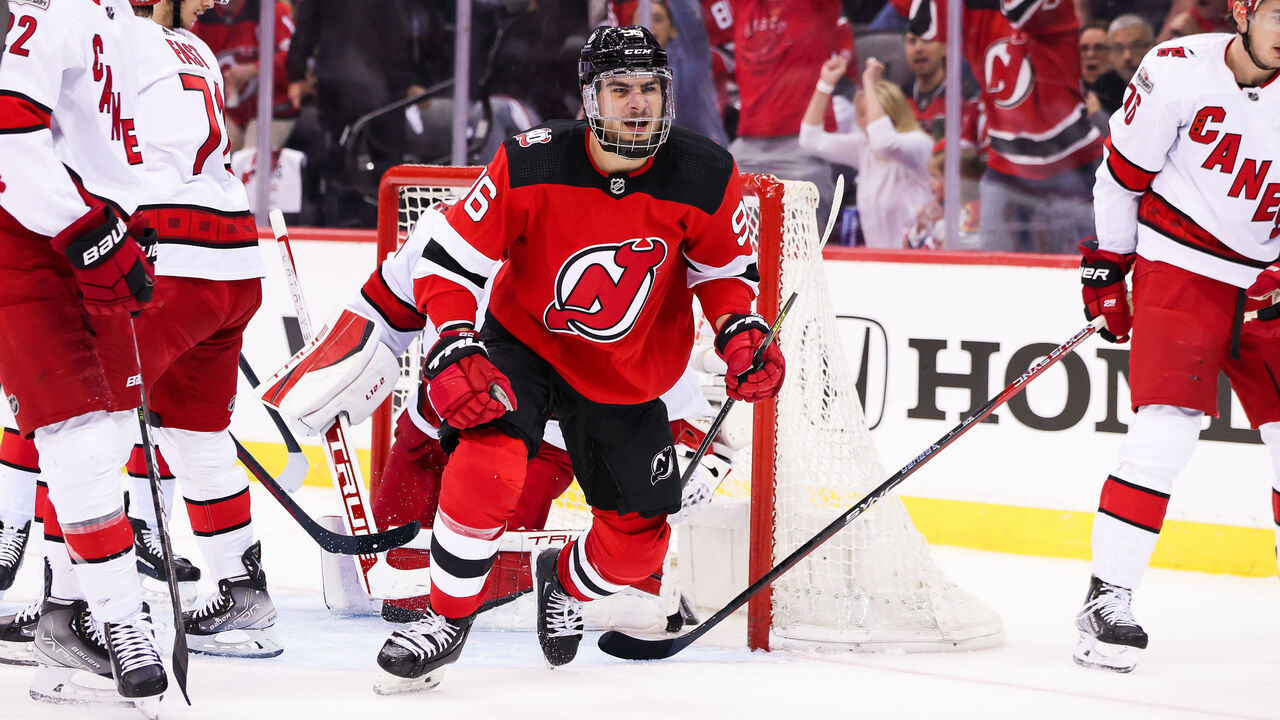
You already know I'm high on the Devils if you read my series slotting all 32 teams into tiers, and their goal-scoring depth is a huge reason why. From Jack Hughes (who quietly bagged 43 last year) to 30-goal guys Hischier and Jesper Bratt, to Tyler Toffoli, Timo Meier, Dawson Mercer, and Ondrej Palat, there's no shortage of proven finishers. Other weapons include rookie winger Alexander Holtz and bottom-six center Michael McLeod, as well as blue-liners Dougie Hamilton and Luke Hughes. In 2022-23, the Oilers torched the NHL for 325 tallies - 20 more than any other team. The Devils will be this year's Oilers.
17. William Nylander has huge year, walks in free agency
I don't have a crystal ball. I don't know if Nylander will re-sign with the Maple Leafs or head elsewhere next summer. But if the pending UFA sticks at center, feasts on inferior competition throughout the regular season, and impresses in the playoffs, he may price himself out of Toronto. Centers are typically paid more than wingers, so if Nylander can replicate his output from a year ago (40 goals, 47 assists), he'll be in line for a massive pay bump, perhaps in the neighborhood of $10 million annually over seven or eight years. Nylander says he wants to stay in Toronto, and the Leafs say they want him back, yet starting the year without an extension keeps the door wide open for him to leave. You have to wonder, too, if Nylander is content being the third-best forward on his team. Does he want to try being No. 1 or No. 2 on another squad?
18. Somebody scores 60
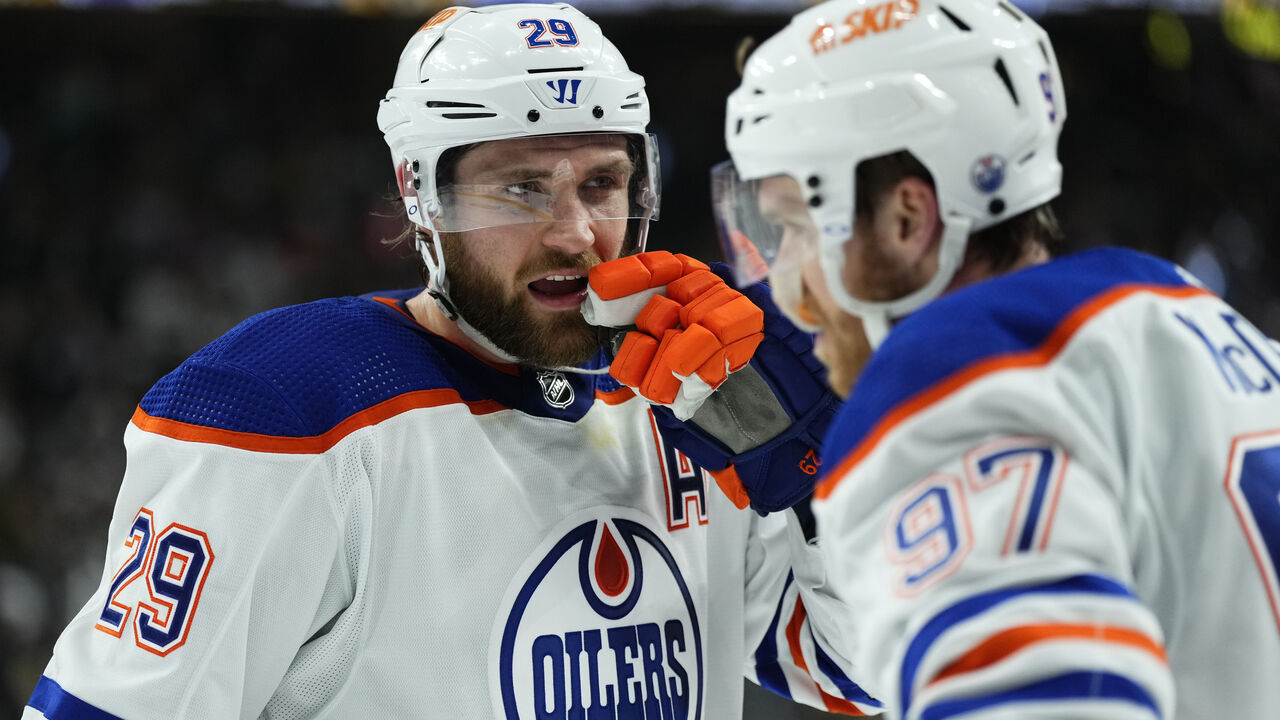
Scoring 60 goals in the NHL is an extremely rare feat. Well, it used to be, anyway. Three of the five 60-goal seasons this century have come in the past two years, with Matthews bagging 60 in 73 games in 2021-22 and David Pastrnak (61 in 82) and McDavid (64 in 82) reaching the milestone last season. I don't think the fun stops this year. To me, there are five legitimate threats to crack 60: Matthews, McDavid, Pastrnak, Draisaitl, and Mikko Rantanen. All of them are still in their 20s, in their primes, and one will blast off.
19. Harley, Lundkvist become Stars' answer
There aren't many franchises with more roster security than Dallas. GM Jim Nill has assembled a star-studded forward group to go along with a franchise goalie and franchise defenseman. The Stars' only glaring issue is blue-line depth beyond Miro Heiskanen. Jani Hakanpaa, Ryan Suter, Esa Lindell, Thomas Harley, and Nils Lundkvist are all NHL-caliber defensemen - which is fantastic - but where are the difference-makers? Veterans Suter, Hakanpaa, and Lindell are what they are at this point. So it's up to Harley, 22, and Lundkvist, 23, to level up. Harley was excellent in the playoffs and Lundkvist added 15 pounds of muscle over the offseason. Yeah, one will elevate.
20. Bedard leads Chicago in scoring, doesn't win Calder
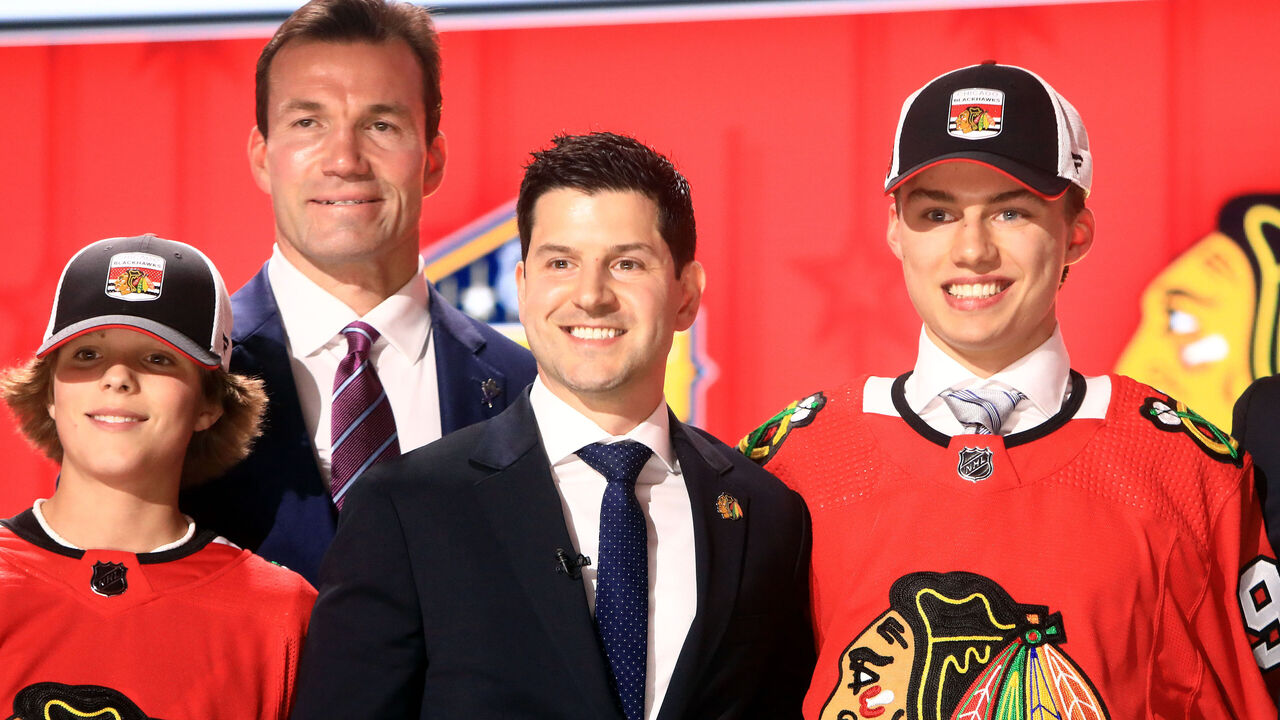
We won't know for sure until we see him skate in regular-season games, but Connor Bedard looks like he may be the Blackhawks' best player. (That's equal parts a compliment to Bedard and an insult to the roster as constructed.) Despite little help, I'm betting Bedard finishes with a team-leading 70 points. He'll be nominated for the Calder Trophy but will lose out to a player with legitimate support. Someone in the field - Logan Cooley, Fantilli, Levi, Hughes, or Matthew Knies - will have a better case.
21. Macklin Celebrini goes wire to wire as top 2024 draft prospect
The 2024 draft class doesn't have a Bedard-type prospect, but Boston University center Macklin Celebrini is still worth tanking for. The 17-year-old from Vancouver has everything going for him: He's a dual threat on offense, he gives a damn about defense, he has size, and he's clutch. Celebrini has company, though, as part of a Big Three featuring goal-scoring American winger Cole Eiserman and playmaking Russian winger Ivan Demidov. There'll be plenty of debates about who should go first overall, but Celebrini's primed to go wire to wire as the class' premier prospect given his tools, size, and position.
22. Patrick Kane signs with Avalanche
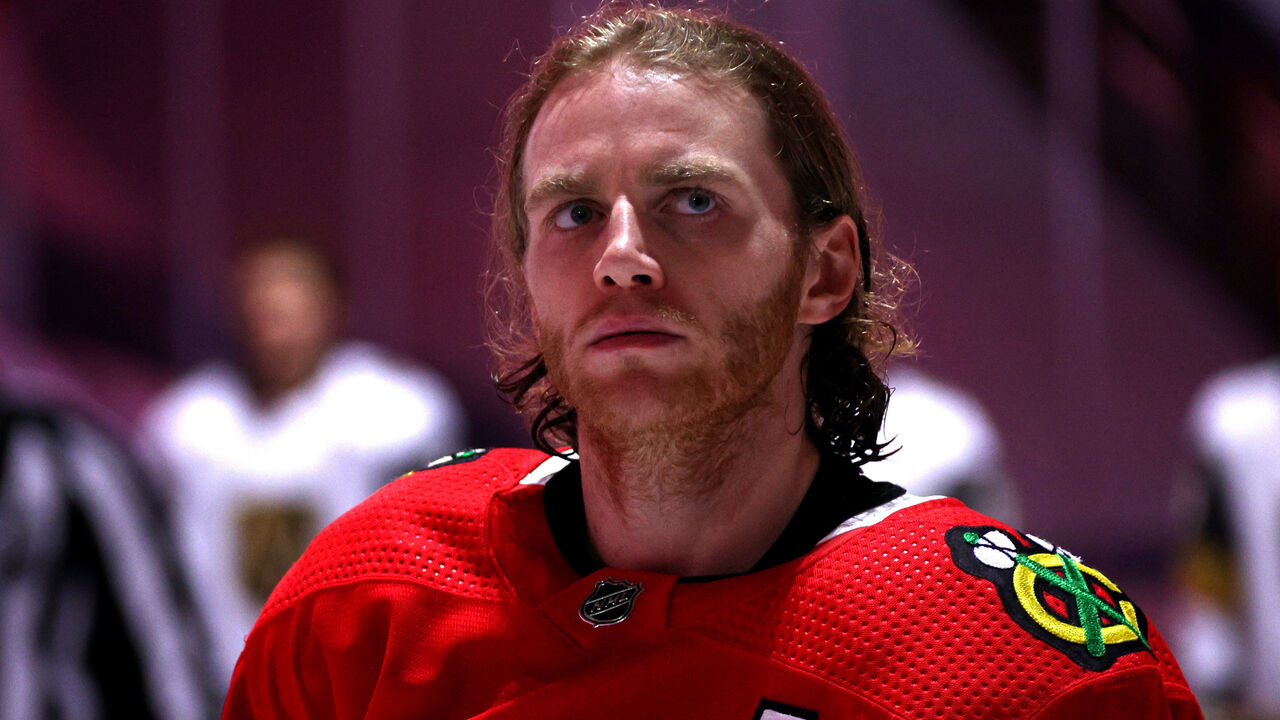
One of the marquee names on the 2023 UFA market remains unsigned. Kane, recovering from offseason hip surgery, reportedly won't start talking to interested GMs for another few weeks. There are no obvious fits, given Kane probably prefers to join a highly competitive team and virtually every noteworthy club is capped out. Buffalo's believed to be in the hunt, while Carolina, Vegas, Toronto, Dallas, and Boston register as other potential landing spots. I predict he'll end up in Colorado. The Avalanche have a winning pedigree, Kane can fly under the radar due to market size and the star power already on the roster, and he can fill in for sidelined winger Gabriel Landeskog (before Landeskog "pulls a Kucherov" and returns for the playoffs). The Avs need to shed money to bring "Showtime" aboard, and I say they do it.
23. Ovi drops out of Rocket contention
This will be the year Alex Ovechkin noticeably slides down the goal-scoring leaderboard, but he'll still maintain a respectable pace in pursuit of Wayne Gretzky's all-time record (he starts the season 72 goals behind Gretzky's 894). No longer at the peak of his powers and coming off a 42-goal campaign, I think Ovechkin drops into the 35-40 range. He's unbelievable - trust me, I want him to snipe 50 - but Father Time comes for everybody, and the Capitals captain is 38 and in his 19th season. If Ovechkin reaches 40 goals, he'll have his sights set on passing Gretzky in 2024-25, the second-last year of his deal.
24. Oilers beat Hurricanes in Cup Final
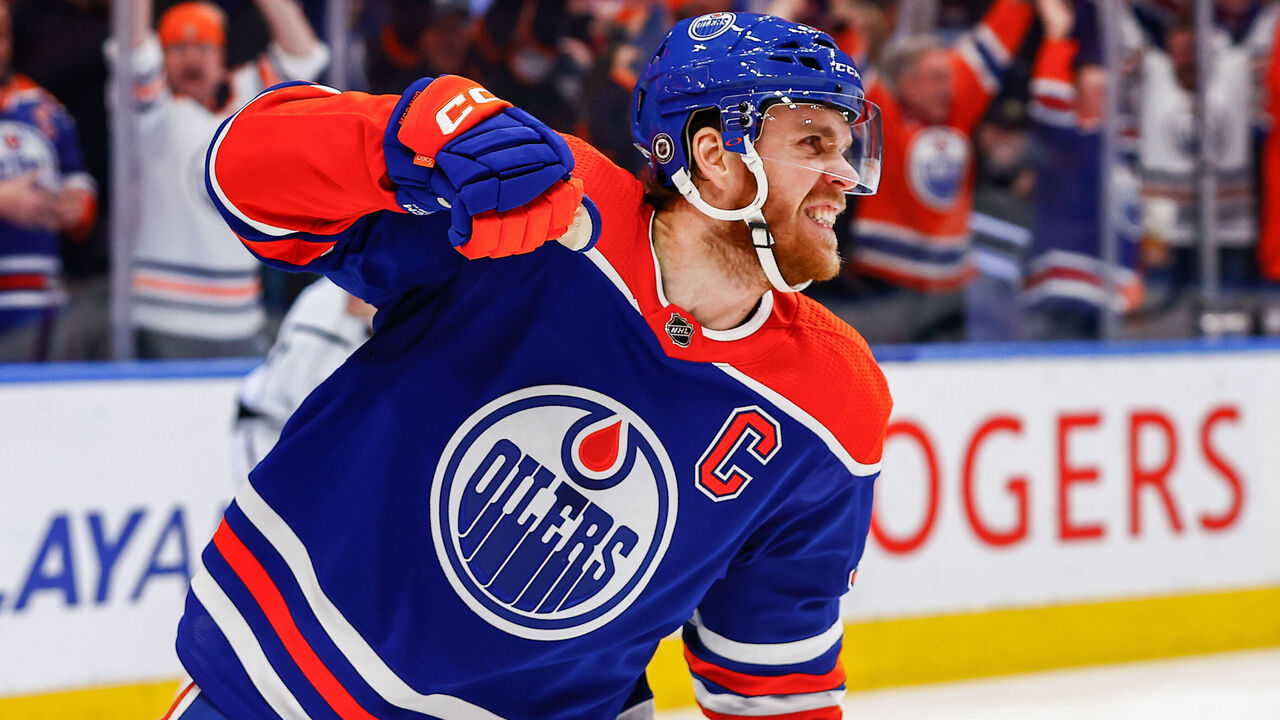
This year's Cup-contending field is deep - a handful of teams in each conference have a realistic chance of making the final. But I predict Edmonton and Carolina survive the gauntlet of the first three rounds and meet for a rematch of the 2006 final, with the Oilers crowned champs this time around. Edmonton's roster isn't perfect, but GM Ken Holland made enough improvements to give McDavid and Draisaitl ample support - and we all know what Connor and Leon are capable of in high-pressure moments. It all comes together for Nos. 97 and 29 in 2023-24.
John Matisz is theScore's senior NHL writer. Follow John on Twitter (@MatiszJohn) or contact him via email (john.matisz@thescore.com).
Copyright © 2023 Score Media Ventures Inc. All rights reserved. Certain content reproduced under license.
